SMART DECISIONS: Aquabyte Revolutionising Aquaculture with Advanced Technology
- Aquaculture Denmark
- Mucosal health: Reinforcing fish skin and gut mucosal barriers with specific yeast product
- Sustainable Aquafeed Alternatives
- Advancing Gender Equity in Mediterranean and Black Sea Fisheries

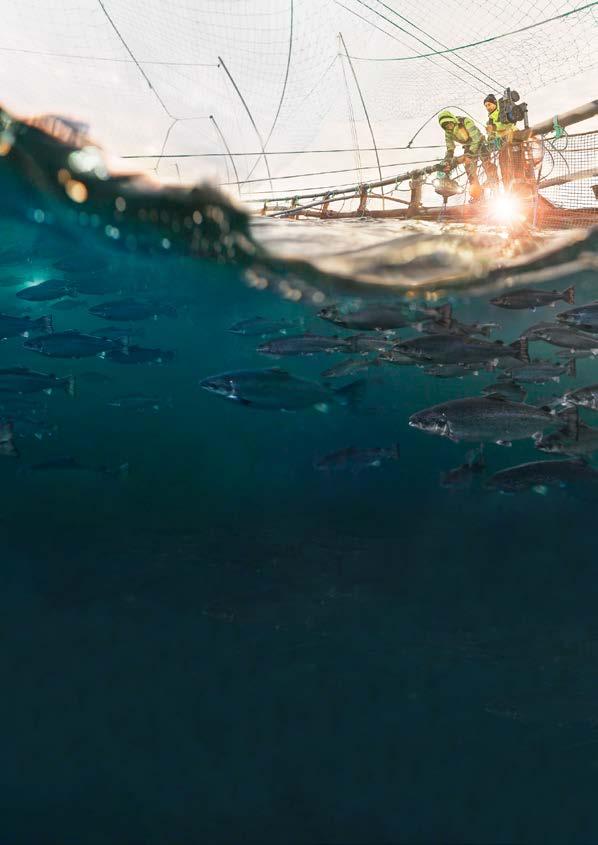
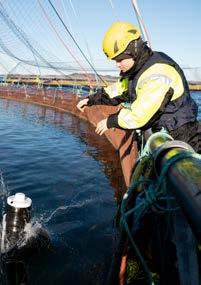
International AquafeedVolume 27Issue 4April 2024 www.aquafeed.co.uk www.fishfarmingtechnology.net
ApRIl 2024 Proud supporter of Aquaculture without Frontiers UK CIO FISH FARMING TECHNOLOGY 27 Fish Farming Technology - Volume 27 - Issue 4 - April 2024 28 EDITOR: Erik Hempel 30 Novel sea lice vaccine research leaps forward to next stage 32 Transparency Solutions Unveiled at SEG Barcelona 33 Phileo by Lesaffre unveils Aquasaf Shrimp 33 Fluctus enters Chilean market 34 Aquaculture Denmark 38 Smart decisions: Aquabyte Revolutionising Aquaculture with Advanced Technology 44 REVOLUTIONISING AQUACULTURE 48 Advancing Gender Equity in Mediterranean and Black Sea Fisheries 54 TECHNOLOGY SHOWCASE APRIL 2024 Fish Farming Technology - Volume 27 - Issue 4 - April 2024
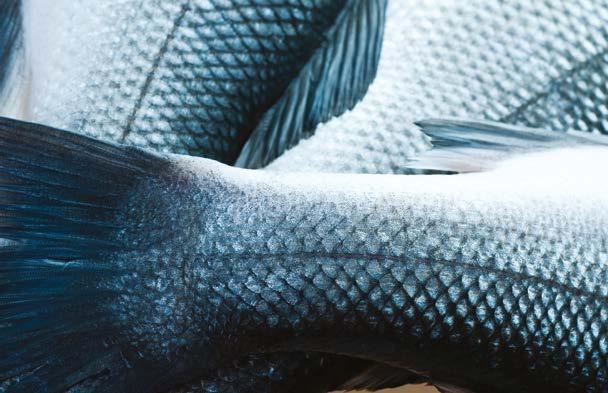
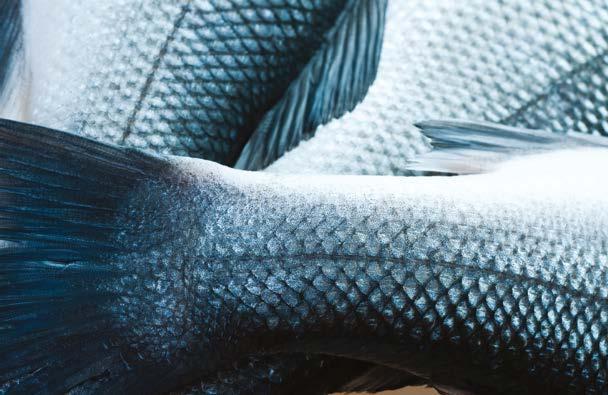











Looking for a total feed mill solution?
We’re listening
As industry experts, we fully understand the unique challenges you face in the aquafeed industry. That’s why we are committed to assist you throughout the entire journey, from concept to complete installation We are fully equipped to bring your vision to life!
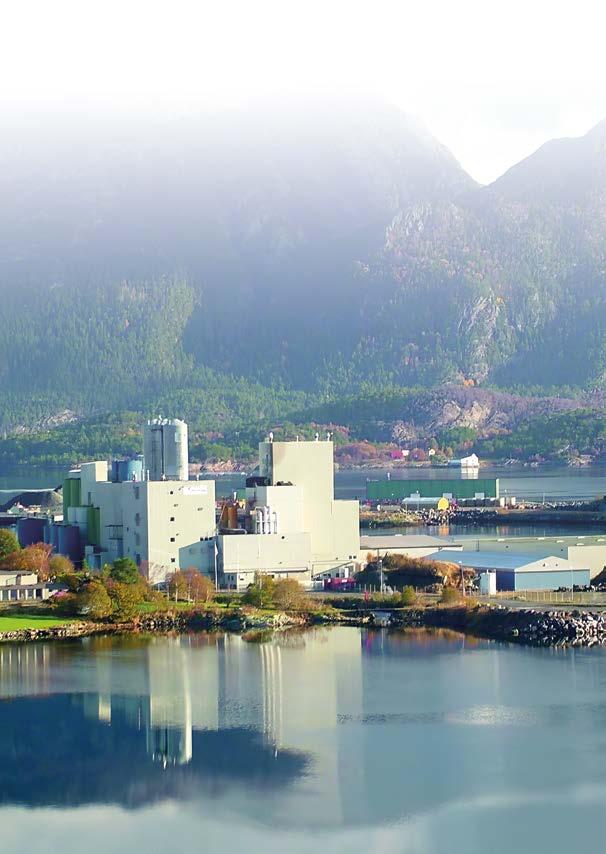
Let’s talk partnership
»
Skretting, Norway
WELCOME
Welcome to a very full edition of International Aquafeed and Fish Farming Technology magazine’s April edition!!
And it’s a bumper edition for the latter this month.
We have increased the size of our Fish Farming Technology magazine due to growing pressure that we should be addressing the use and effectiveness of feeds from a hatchery and farmer’s perspective. Fair enough, and we are responding.

Roger
Gilbert
Publisher – International Aquafeed and Fish Farming Technology
Gaining the most from aquafeeds at the point of utilisation requires precise farm management over a range of activities, and that in turn requires us to report aspects of feed delivery and fish behaviour from the pond side, from within the cages or nets themselves; or wherever fish are being grown on formulated aquatic feeds.
The equipment we focused on in Fish Farming Technology magazine – which is published as part of International Aquafeed magazine - is the technology that ensures farmers gain the most from their feed inputs. Afterall, feed costs make up 70-80 percent of the costs of a farm’s operation.
The upcoming IAF Directory 2024-25
Talking of both feed formulation and technology combined in a joint publication, I’m please to say we are publishing, in July 2024, the 202425 annual edition of our International Aquafeed Directory.
We are in the final stages of bringing together this year’s Aquafeed Directory and we will be making it widely available for our readership base, from stands at shows and to all those who write and ask for it.
At present we are distributing the final copies of the 2023-24 Directory. We will have exhausted these supplies by the time our annual printing deadline comes around –in July each year.
We are excited to say we are adding a new section to the 2024-25 Directory to address Fish Farming Technology specifically; which until now had not been included.
These additional resources, within the directory, will benefit all readers and industries across the aquafeed production and utilisation sectors.
If you are a company supporting the industry, we look forward to you registering a listing within the Directory to reach our readership. There are several options based on a free listing that you can opt to include. To find out the details please email Peter Walker at: peterw@perendale. co.uk for a listing form. It can be completed digitally and returned which will ensure you won’t be missed when we publish the upcoming Directory.
In this issue
Professor Simon Davies introduces the April edition of International Aquafeed with a focus on a changing climatic conditions and the impact and response our industry is having, in particular on protein and energy sources. He refers to an investigation into Lupins in Chile and references the paper published in our Journal last month.
He also addresses the importance of fishmeal in specific diets. And we support his comments with features on the ‘Fish Feed for the Future’ (page 20) and ‘Black Soldier Fly – Changing the recycling landscape in South Africa’ (page22).
Dr Brett Glencross, who is helping to organise this year’s ISFNF in Puerto Vallarta, Jalisco, Mexico (from May 27-31, 2024), draws our attention to what big salmon companies in Northern Europe are doing to reduce their carbon footprints by 2030; an intriguing column (page 13).
Our IAF Production Showcase is followed by our bumper edition
of Fish Farming Technology with editor Eric Hampel pointing to a study carried out in Norway by the Ministry of Trade, Industry and Fisheries that shows technology in our industry could reach US$10 billion worldwide over the next five to seven years (page 28).
In this edition of Fish Farming Technology, we look at Denmark as a world leader in fish farming technology, prepared for us by Martin Winkel Lilleoere, Head of Fish Tech for the Danish Export Association.
We also have contributions by Jyothsna Nelloolichalil from our editorial team and Costa Skotidas, our Content Development Manager, for International Aquafeed and Fish Farming Technology. Their feature ‘Smart Decisions’ (page 38) looks at Aquabyte and how this company is revolutionising aquaculture with advanced technology.
The Food and Agricultural Organisation (FAO) and the General Fisheries Commission for the Mediterranean (GFCM) present a great article on ‘Advancing Gender Equity in Mediterranean and Black Sea Fisheries (page 48) that before we present this month’s Technology Showcase.
Cleaner fish get a mention just before we report on Aquaculture America and Fish International 2024. Our Market Place follows before we finish with an interview with Ronald Faber, CEO of Alltech Coppens in The Netherlands and our Industry Faces page.
Out and about
Our team will be out and about this month and next with Costa Skotidas, attending the Global Seafood Marketplace in Barcelona, Spain from April 23-25.
Meanwhile our colleague Mehmet Ugur Gurkaynak, who is based in Turkey will be attending Seafood Expo Eurasia which takes place in mid-May, from the 15th-17th in the Tuyap Fair and Congress Centre in Istanbul. Both will have editions for you to take away as a personal gift from us.
Talking of May, there are more events of note that you should be aware of and if possible, attend. ~In addition to those mentioned above, Aquaculture UK which will attract not only the Scottish and aquaculture interests from across the UK, but also draw in Northern European salmon interest along with loads of nutrition and fish farming technologies. This two-day event take place on the 14-15th of May in Aviemore, Scotland.
If you want to make an appointment to meet with us at a specific time, please email my colleague Peter Walker at: peterw@perendale.co.uk. He will make arrangements for you to meet with any of our staff attending the above shows.
New to the Editorial Board
We are pleased to welcome a new Editorial Board Member to our team. He is Prof Dinesh Kaippilly Head of the Department, Aquaculture at Kerala University of Fisheries & Ocean Studies, in Ernakulam, Kerala, India. He has held his professorship for over six years, working as an assistant professor teaching research and extension at the KUFOS for 22 years from June 2002. He attended the College of Fisheries at Panangad, for 10 years until 1986.
We are honoured to have such a dedicated fisheries and aquaculturist joining our Editorial Board. We will be learning more about him in the following editions of the IAF.
A lot to read. Enjoy this bumper edition!
www.aquafeed.co.uk


Digital community manager
David Harvey
davidh@perendale.co.uk
Design Manager
James Taylor jamest@perendale.co.uk
Circulation & Events Manager
Tuti Tan
Tel: +44 1242 267706 tutit@perendale.co.uk
Development Manager
Egyptian Marketing Team
Mohamed Baromh
Tel: +20 100 358 3839 mohamedb@perendale.com
India Marketing Team
Dr T.D. Babu +91 9884114721 tdbabu@aquafeed.org
Asia Marketing Team
Dante Feng
Tel: +886 0227930286 dantef@perendale.com
Nigeria Marketing Team
Nathan Nwosu
Tel: +234 8132 478092 nathann@perendale.com
Antoine Tanguy antoinet@perendale.co.uk
Aquafeed Journal journal@perendale.co.uk
FISH FARMING TECHNOLOGY REGULAR ITEMS Perendale Publishers Ltd 7 St George’s Terrace St James’ Square, Cheltenham, Glos, GL50 3PT, United Kingdom Tel: +44 1242 267700 Publisher Roger Gilbert rogerg@perendale.co.uk Managing Editor Joy (Jyothsna) Nelloolichalil joyn@perendale.co.uk International Editors Dr Kangsen Mai (Chinese edition) mai@perendale.com Prof Antonio Garza (Spanish edition) antoniog@perendale.com Erik Hempel (Norwegian edition) erikh@perendale.com Editorial Advisory Panel - Dr Abdel- Fattah M. ElSayed - Dr Alessio Bonaldo - Dr Allen Wu - Prof Charles Bai - Dr Daniel Merrifield - Dr Domique Bureau - Dr Elisabete Matos - Dr Eric De-Muylder - Dr Noor Khan - Dr Pedro Encarnacao - Dr Philip Lyons - Prof Dinesh Kaippilly Editorial team Prof Simon Davies sjdaquafeed@gmail.com Shannon Parsons shannonp@perendale.co.uk Niamh Cassidy niamhc@perendale.co.uk International Marketing Team Darren Parris Tel: +44 7854 436407 darrenp@perendale.co.uk Costa Skotidas +44 7826 545952 costas@perendale.co.uk Latin America Marketing Team Cristina María Roldán Otero Tel: +44 1242 267700
cristinaperendale@gmail.com
©Copyright 2024 Perendale Publishers Ltd. All rights reserved. No part of this publication may be reproduced in any form or by any means without prior permission of the copyright owner. More information can be found at www.perendale.com ISSN 1464-0058
56 Aquaculture case study 58 Industry Events 72 the market place 76 the interview 78 the industryfaces
Page 7 Page 27
Increase you profit in aquaculture with our Jefo Protease.
Increases Digestibility
Improves Feed Conversion
Improves Environmental Sustainability
Life, made easier. jefo.com
Jefo PEAK Program Production & Performance
DRAFT

1 International Aquafeed - Volume 27 - Issue 4 - April 2024 8 EDITOR: Professor Simon Davies 11 FreezeM raises millions to accelerate market expansion 12 KAS announces US$3M funding round 14 Veramaris secures Canadian authorisation for algal oil in aquafeed 16 Mucosal health: Reinforcing fish skin and gut mucosal barriers with specific yeast products 20 Sustainable Aquafeed Alternatives 22 Changing the South African recycling landscape 24 PRODUCTION SHOWCASE
In Europe at least April brings a spring into my steps as the days get noticeably longer with a hint of warmth in the air. However, as our planet tips towards the sun from our northern perspective, our readers in the southern hemisphere can look forward to autumn and chillier weather advancing. Today as our climate appears to be changing with elevated temperatures in many regions, this tends to create a ‘fuzzier’ situation with excesses of dry spells, countered by heavy rain and floods making for havoc with our predictions for agriculture and also aquaculture planning. Effects on crop production, transport networks, pose serious threats to our important supply chains of raw materials and there are of course also conflicts and security issues in many key parts of the world that could affect the fluidity of aquaculture feed production. More than ever we now need much backup in terms of proteins and energy rich ingredients and fortunately great progress is being made for the alternative scenarios. Research by many companies into insect meal is giving dividends as a viable nutritional source. Black soldier fly larvae, meal worms and locusts or crickets are high in protein and constitute an excellent essential amino acid index (i.e. meeting the ideal amino acid profile close to a fish’s requirement in terms of muscle tissue biosynthesis and ova. Of course, there are continuing options of Single Cell Proteins (SCPs) and these include fungal, bacterial and algal sources. Although very promising, there is still in total a low scale of production compared to the vast tonnage of conventional major ingredients such as fishmeal and soybean meal being utilised in most aquafeeds destined for fish and also shrimp. I have much hope for many other more locally produced terrestrial plant ingredients such as lupins and maize gluten meals as well as the newly buoyant types of advanced high ended protein products like the high protein type of distillers’ dried grains HP-DDG. Fermented Corn Protein (FCP) is the new player from the US biorefinery domain with many proven studies confirming efficacy in trout, carp, Atlantic salmon, shrimp and recently in seabass. This is an excellent example of the circular bioeconomy and serves to promote a truly sustainable approach in terms of resource allocation. There has been much criticism in the past regarding the use of corn that could be destined for human consumption being diverted towards ethanol biosynthesis. However, with the right technology, more than 40% of the commodity (as co-products) can be concentrated and recovered to produce a dried biomass of over 50% protein for animal feed.
Additionally, recent studies that I have been associated with involving colleagues in Chile have successfully tested local cultivars of lupins grown on the Andean slopes. Our work is now published showing that lupin can be incorporated at up to 30% in diets for ocean raised rainbow trout. I think there is a growing plethora of ingredients that can be considered as a collective complementary alternative rather than each viewed in isolation for feed formulations.
It should be noted that there is still much work to be done to develop even the traditional feed ingredients and last month IAF included both in the magazine a new paper by final year student Matt Bell and myself and also in the Aquafeed Journal on comparing different processed soybean meal and maize gluten meal against a LT fishmeal reference diet as a more orthodox ‘scientifically correct ‘approach.
Previous studies on tilapia have tended to test inclusions in practical diet simulations and fail to provide consistent answers for use in linear least cost formulations. It is difficult sometimes to see
 Professor Simon Davies Nutrition Editor, International Aquafeed
Professor Simon Davies Nutrition Editor, International Aquafeed
where the upper threshold limit of an ingredient lies against other ingredients.
I am still a large fan of fishmeal protein in diets for carnivorous fish and fishmeal is like an ‘insurance policy’ in the diet. A guarantee of essential amino acid provision, high digestibility, important sources of macro-minerals like phosphorous, calcium and magnesium and trace elements such as zinc and selenium. There is much justification for its use, and I am pleased to see more capacity for inclusion of fishmeal generated from trimmings and discards as a consequence of fish processing technology. There are huge advances in the fish rendering industry linked to such industrial fish and those from normal capture fishery operations. The so called ‘protein gap’ agenda can be filled to a good degree from such activities. We need more data from many fish species on how best and what optimum phase of their production to include in diets for more efficient conversion. This is especially true in critical stages of fry development and in events like salmon smoltification where fish may more stressed, immunologically compromised, and subject to pathogens.
In this issue, I present an article reviewing the attributes of nettle ground meal as a novel and functional ingredient for fish covering a number of characteristics such as its powerful antioxidant and immune stimulation properties. It is very high in key minerals and a range of both lipid and water soluble vitamins and Vitamin C. Nettle contains phytosterols and active phenolic compounds of metabolic interests that are known to confer health and even elevated disease resistance in many animal studies. Some limited research work on fish have validated their potential in aquafeeds and aquaculture as in my review.
We live in exciting times and hopefully I can be in the forefront of gathering knowledge from the academic world and with opportunities by the industry for aquafeeds to continue their trajectory underpinned by research. Research costs can be very high in aquaculture due to the many fish required in experimental studies. The feeding trials are of long duration in most cases and at academic institutions there is increasing stringent legislation. This is particularly true when novel compounds and feed additives are being investigated. It is important that a synergy exists between our universities and commercial companies with respect to experimental design and the relevance or findings. From my experience there are many ‘in house’ fish feeding trials but not many can be scientifically scrutinized. Such is the value of peerreviewed journals to complement the trade magazine and online platforms.
Wherever you are, enjoy our magazine, Happy Spring reading to you all!


8 | April 2024 - International Aquafeed
Pole position – Great upgrade of your feeds.


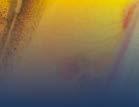

The Leiber Animal Nutrition develops and produces sustainable brewers‘ yeast products that helps to improve the health and productivity of fish and crustaceans in the long term.
Real brewers’ yeast! Really effective!
Leiber® Beta-S
Highly purified ß-glucans
Immunity booster
Increased resilience
Improved vaccinations
Leiber® Beta-S Plus
The ß-glucan alternative
Synergistic blend of pure ß-glucans and MOS
We have been upcycling at world-market level since 1954 and keeping the environment and climate in mind.
CeFi® pro
Autolyzed brewers‘ yeast
Rich in nutrients and active ingredients
High bioavailability of the same
Stimulates the metabolism
Promotes feed intake and performance
For us, sustainable behaviour is a vital component of our core business. After all, upcycling brewers’ yeast is at the heart of what Leiber has always been about – Give Yeast a Second Life.
Leiber GmbH | Franz-Leiber-Str. 1 | 49565 Bramsche Germany | info@leibergmbh.de
our website: leibergmbh.de
Visit
Something powerful happens when shared expertise, care and nutritional performance come together. Unrivaled solutions designed to advance your business forward. That is the transformational power of partnership.

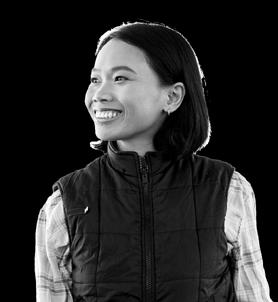
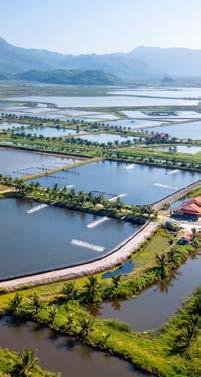
Dosing & weighing experts since 1973 Easy maintenance Track & trace Reporting Continuity Employee shortage Health safety and environment Accuracy Short batch times Micro dosing and weighing equipment for: Offering a solution to your challenges such as: www.ksegroup.com
with us at zinpro.com #PowerOfZinpro
Partner
Partnership. Performance. Profit.
10 | April 2024 - International Aquafeed aquafeed news
FreezeM raises millions to accelerate market expansion
FreezeM, an Agri-tech pioneering biotechnology company that offers Breeding-as-a-Service (BaaS) for Black Soldier Fly (BSF) protein factories, announced today the closure of US$14.2 million in Series A funding. The funding round was led by a group of seasoned industrial investors and the prestigious European Innovation Council Fund (EIC Fund), along with FreezeM’s existing investors and partners. The funding will be used to accelerate the growth of the company’s breeding hubs network and commercialize its novel solutions at scale, accommodating the rapidly increasing market demand.
FreezeM aims to simplify BSF reproduction and increase protein yield through the supply of its PauseM® product to BSF protein producers, tapping an estimated $3.96 billion market by 2033 according to Meticulous Research forecast. This innovation plays a vital role in boosting insect protein production capacity for livestock and pet food while implementing a circular economy, conserving precious global farmland, and reducing ocean depletion.
Traditionally BSF breeding is a major bottleneck in industrial scale insect protein production, requiring unique bio-expertise to tackle inherent colony instabilities and technological gaps. While there are vast off-the-shelf engineering solutions for rearing and processing, breeding challenges can’t be addressed by machinery alone. As the insect farming industry matures, it follows a similar trajectory to other established agricultural market segments, moving towards supply chain specialization and segmentation. PauseM® is developed to overcome the fundamental challenges of insect breeding, thereby giving our customers’
THE REVOLUTION IN PELLETING
competitive edge in the market. By eliminating these industry constraints, PauseM® not only promotes sector growth but also facilitates scaling of the global insect protein industry. PauseM® is a ready-to-use product, containing lifecycle ‘paused’ BSF neonates with an extended shelf-life of 14 days and consistent high survival rates of over 90%. PauseM® is shipped to BSF protein facilities worldwide, stored on site and flexibly used according to production needs. This technology paves the way to a new decoupled BSF protein production model, separating the breeding phase from rearing and processing phases for the first time in the insect farming industry. The adoption of PauseM® as an outsourced ongoing breeding supply enables increased protein production efficiency, reduces Opex and Capex and streamlines seamless scalability.
FreezeM takes the breeding hurdle out of the equation, streamlining insect protein production and making it more efficient and accessible to new entrants and veteran market players. This technology establishes a new decoupled BSF protein production model, marking the first time in the insect farming industry that the breeding phase is separated from the rearing and processing phases. The company currently supplies PauseM® globally, catering to small to large-scale BSF protein factories. “The current funding round will enable FreezeM to embed our technology globally at scale and accelerate the growth of our breeding hubs in Europe and Israel, thereby driving successful commercial expansion. Our technology unleashes the insect market from its shackles and will propel the insect protein market to fulfil its true potential.”said Dr. Yuval Gilad, Co-founder and CEO of FreezeM.








Progress MonoRoll HE 10-15% higher throughput Optimum pellet quality 30% life extension of roller and ring die Guaranteed 20% energy savings Guaranteed 20% Please contact us for the possibilities within your company info@ptn.nl - www.ptn.nl Scan de QR-Code for more information International Aquafeed - April 2024 | 11 aquafeed news
TECHNOLOGY
KAS announces US$3M funding round
Kuehnle AgroSystems (KAS), a leading microalgal innovation and production company, recently announced that it has raised a US$3 million Series A2 funding round led by S2G Ventures. The funding will accelerate the commercialisation of KAS’s pioneering method for producing natural astaxanthin from micro algae, a key component in sustainable aquaculture systems as well as a clinically proven human nutraceutical.
KAS has patented an innovative process that uses dark fermentation in closed and vertical tank systems to produce high-quality natural algae astaxanthin. Utilising a more sustainable feedstock and production method than current natural and synthetic astaxanthin production methods, KAS’s process results in lower production costs, higher yields, faster growth times and less water and energy consumption.

Astaxanthin is a carotenoid with antioxidant properties present in natural aquatic algae, which is consumed by salmonids and shrimp and gives these species their characteristic red colour. In aquaculture systems, which produce over 50 percent of the seafood we eat globally, astaxanthin is incorporated to provide similar pigments. However, 95 percent of astaxanthin currently used in aquaculture feed is synthetic and derived from petrochemicals. KAS aims to replace synthetic with natural algal astaxanthin, addressing a market that is estimated to be valued at around $3.7 billion.
“Strong consumer preference for natural inputs is expected to accelerate the transition from synthetic to natural astaxanthin,” said Claude Kaplan, Chief Executive Officer of KAS. “With our ability to generate greater astaxanthin output volumes, quicker and at a reduced cost compared to light-dependent methods, this funding strongly positions KAS to respond to the rapidly expanding needs of the market.”
“KAS’s fermentation breakthrough, natural strain development process, and sustainable production method all have the potential to transform the natural astaxanthin market, a key input for more sustainable aquaculture practices that can drive better outcomes for people and the planet,” said Larsen Mettler, Managing Director at S2G Ventures. “We are proud to be part of KAS’s journey and look forward to supporting the impact they are poised to make in the market.”
Existing backers of KAS include Aqua-Spark, Hatch and Cavallo Ventures.
“We continue to be impressed by the KAS team’s capacity to leverage their scientific and commercial knowledge to produce a truly innovative solution for replacing synthetic with natural astaxanthin,” said Lissy Smit, CEO of Aqua-Spark. ‘As the aquaculture industry continues to grow at a rapid pace, we need more companies like KAS that are solving core challenges in the value chain to ensure our food system is healthier and more sustainable for consumers and the planet.”
KAS will initially launch with its European-based production partner with the capacity to distribute globally. This new funding will enable KAS to exploit its ability to use standard fermentation equipment, to swiftly expand production through leveraging contract manufacturers, with the option to bring production in-house in the future. And while KAS’ process is inherently more resource efficient than competitors, the company’s technology also holds future potential for recycling the gas generated during fermentation to produce feedstock to be fed back into the fermentation process creating fully circular algal products.
12 | April 2024 - International Aquafeed aquafeed news


Brett Glencross
Navigating the Stormy Seas of Sustainability
There has been much development in sustainability reporting and targeting setting of late. Notably, each of the big salmon feed companies have issued some targets toward reducing their carbon footprint by 2030. However, to deliver on such target setting there needs to be some form of metric, a means by which we measure something. After all, as it is often said, “you cannot manage something, if you cannot measure it”. The chosen tool-of-trade being used by most organisations these days for such sustainability reporting is the use of lifecycle assessment (LCA). LCA works a bit like an environmental accounting system; with various processes used to define how far upstream and downstream of a product or process is considered, and then other processes used to work out all the inputs and outputs associated with the process or product. The inputs and outputs are then converted into standardised units and the further environmental impacts of all those outputs are then converted to standardised (equivalent) output units. Ultimately you end up with tallies of all those various standardised equivalent outputs for various categories, and so you end up with a nice clear quantitative outcome. The sort of thing that can be quite useful in comparing different options. A problem arises though, in that how you undertake an LCA analysis can have a big impact on that outcome. And in recent years there has been an explosion in the number of LCA studies reported on everything. This plethora of LCA studies out there, and the associated green claims being made against them has led to the European Commission tabling new regulations called the “Greenwashing Directive” (EC 2023/0085). In essence, the EC has begun to call out those
organisations gaming the LCA system to unfairly represent their products and/or services. Indeed, it was noted some time ago that to for such studies to be useful there needed to be some standards set, so the International Standardisation Organisation (ISO) set up the ISO 14040 series of standards, which provide some overarching framework on how LCA studies should be undertaken. Recognising that these did not really cover the level of detail required for certain sectors, the Europeans established the Product Environment Footprint Categorisation Rules (PEFCR) approach, and these standards exist for a variety of sectors, including the animal feed sector. Following on from the PEFCR initiative, a collaborative effort between the North Americans and the Europeans resulted in the formation of the Global Feed Lifecyle Assessment Institute (GFLI), which was established as a centralised database on the global feed ingredient sector. Notably the GFLI set further rules and guidelines for a raft of different LCA processes and criteria, but to date it still represents the best and largest pool of LCA data on around 1500 ingredients from around the world. However, the GFLI dataset remains far from perfect. Much of the data is derived from what we call secondary sources (scientific papers, company reports, etc), usually where someone external to the sector has undertaken an assessment using what data they can find. The problem with this is that not only are most of those sources out-of-date, but often key bits of information are missing. To fix this, what we need is referred to as “primary” data. Data direct from the sector involved, and data that is up to date and representative of what is actually happening on the ground or out at sea. But navigating the system to collect, collate and interpret this data is far from straightforward. Although like all navigation exercises, if we know where we are now, and we can see where we have come from, then it’s a matter of staying our course as we chart our way through the stormy seas of sustainability. After all sustainability is a journey, not a destination.



BOURNE AES R C H & RECRUITMENT SELE C T I NO � CHIEF COMMERCIAL OFFICER � GENERAL MANAGERS
MANAGING DIRECTORS
CHIEF MILLERS
FEED & POULTRY MANAGERS � MAINTENANCE MANAGERS � R&D NEWPRODUCT DEVELOPMENT � SALES & MARKETING � PLANT MANAGERS � CFO’S ���� bournerecruitment.co.uk ���� +44 7764 465 897 THE EXPERT IN FEED, FLOUR MILLING AND FOOD PRODUCTION RECRUITMENT POSITIONS RECRUITED: RECRUITING GLOBALLY International Aquafeed - April 2024 | 13 aquafeed news International Aquafeed - April 2024 | 13
�
�
�
Veramaris secures Canadian authorisation for algal oil in aquafeed
As a key supplier of Omega-3 EPA & DHA-rich oil, Veramaris has completed the necessary three-year registration process for its use in Canadian salmonid farming. The authorisation allows Veramaris to provide Canadian aquaculture with a secure source of ASC- and MSC-certified EPA & DHA – nutrients essential for fish health, welfare and the nutritional value of farm-raised seafood.
The algal oil, produced in Blair, Nebraska, USA, is a regional solution that supports the industry’s move towards adopting alternative Omega-3 sources and reducing dependency on fish oil as a primary source of essential fatty acids for salmon feed.
“The Canadian registration of Veramaris’ algal oil is key to supporting the rising global demand for alternative sources of Omega-3 EPA & DHA. Securing authorisation in Canada is an important step not only for Veramaris but also for the entire aquaculture industry,” says Gertjan de Koning, CEO of Veramaris.
The registration has been welcomed by the Canadian aquaculture sector. Tim Kennedy, President & CEO of the Canadian Aquaculture Industry Alliance, noted, “Canadian aquaculture is at a pivotal point, and Veramaris’ algal oil brings us closer to achieving our sustainability aspirations. This registration not only highlights the strategic value

of aquaculture in Canada but also demonstrates the industry’s commitment to innovation and environmental stewardship.”
Canada is the world’s fourth-largest producer of salmonids, including farmed Atlantic salmon. The market authorisation of Veramaris’ algal oil is expected to make a positive contribution to the health and welfare of farmraised salmon and to advance sustainable practices within the Canadian aquaculture industry.
EXTRUSION AND EXPANSION TECHNOLOGY YOU CAN TRUST
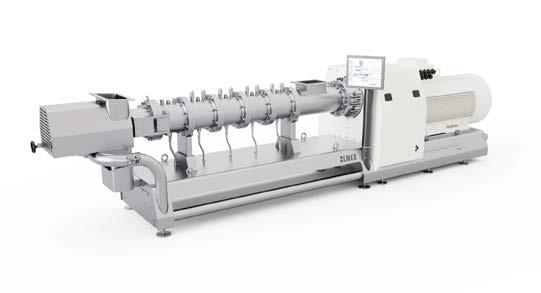
Scan the QR-Code for more information www.almex.nl
www.almex.nl
Almex AXT 220 Single screw extruder
the
in mild steel or stainless steel for extended
The
coupled inline geared motor ensures the optimal energy efficiency. Capacity: 10,0 - 12,0 t/h (indication only) with the Extruder AXT 220 14 | April 2024 - International Aquafeed aquafeed news
The
consists of a robust base frame that supports
main motor, gearbox, and extruder barrel. This frame can be executed
lifetime.
direct

Ecuadorian Shrimp Industry, a thriving and hard-earned success
Yahira Piedrahita, Executive Director, National Chamber of Aquaculture, Ecuador
Ecuadorian shrimp industry has a fascinating history that dates back to the late 1960s, when the country began trying with shrimp farming. Initially, shrimp grew almost casually in coastal lagoons formed by high tides during new and full moon (locally called ‘aguajes’). However, as the demand for shrimp increased globally, Ecuador seized the opportunity to become a major player in the shrimp export market. The industry received a significant boost in the 1980s when Ecuadorian entrepreneurs began investing in modern shrimp farming techniques, leading to a substantial increase in production and quality.
Over the years, Ecuador has worked diligently to establish itself as one of the top shrimp producers in the world. The country’s favorable geographical location, suitable climate, and abundance of natural resources have contributed to its success in shrimp farming. Ecuador’s commitment to sustainable farming practices and stringent quality control measures have further solidified its reputation as a reliable source of high-quality shrimp products. Today, the philosophy of producing “the best shrimp in the world” has become one of the industry’s pillars, from which concrete actions have been enforced shrimp industry continues to thrive, providing employment opportunities and economic growth while meeting the global demand for delicious and environmentally responsible shrimp.
As one of the leading shrimp exporters in the world, Ecuador earns valuable foreign exchange through shrimp sales, which helps strengthen the country’s economy. The industry also plays a crucial role in supporting numerous ancillary businesses, such as processing plants, transportation services, and packaging companies, further boosting economic growth and development in Ecuador.
The shrimp production model in Ecuador is primarily based on semi- intensive aquaculture farming practices and involve controlled pond environments where feed, water quality, and stocking densities are carefully managed to optimize shrimp growth, focusing on maximizing production efficiency and quality. Unlike Asian shrimp producers, Ecuador’s production model does not consider the total exclusion of pathogens from the farming systems, therefore specific pathogen-free (SPF) broodstock are not the seed source. Nonetheless, hatcheries and farms have implemented biosecurity protocols and conduct monitoring and pathogen controls to prevent disease outbreaks. This model has allowed Ecuador to achieve sustained growth in production over the last 24 years, without a significant increase in the farming area.
Automated feeding systems and aerators are employed to precisely control feed distribution and maintain optimal oxygen levels in ponds, reducing costs and human error. Innovations in feed formulation and nutrition management have also contributed to the development of the industry. Farmers are increasingly using probiotics, enzymes, and specialized feeds tailored to the nutritional needs of shrimp at different life stages. These advancements improve feed conversion efficiency, promote healthier shrimp growth, and reduce the environmental impact of shrimp farming through optimized feed use.
In terms of sustainability, the industry has initiated programs and partnerships to promote responsible aquaculture practices within the global shrimp industry. Certification programs and credentials, like the Sustainable Shrimp Partnership (SSP), are promoted to motivate shrimp producers to embrace eco-conscious farming practices, enhance social accountability, and elevate both the quality and traceability of their products.
In recent years, the Ecuadorian shrimp industry has tested its capacity for resilience and adaptation to the different challenges it has faced. The Covid-19 pandemic, the saturation of demand, the drop in prices and changes in access requirements to its main markets have demanded changes in the industry and Ecuador has been able to respond and adapt quickly. In the future, the main challenge is to achieve an increase in demand, and the industry is willing to adapt and respond promptly.


International Aquafeed - April 2024 | 15 aquafeed news
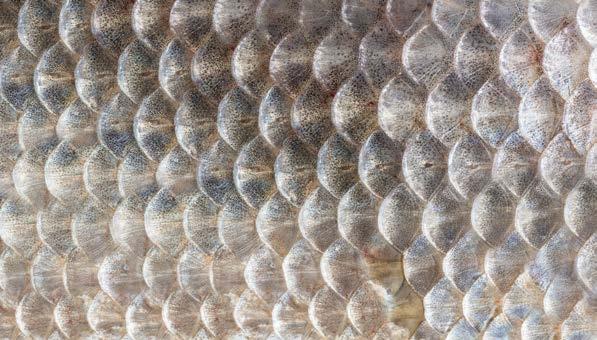
Mucosal health
Reinforcing fish skin and gut mucosal barriers with specific yeast products
by Dr Eric Leclercq, Global Aquaculture R&D and Fish Application Manager, Lallemand Animal Nutrition
In the current context, the need to secure the targeted production volumes and quality while carefully controlling production cost is more than ever essential. Maintaining fish health while minimising the use of antimicrobials has become a major target across the aquaculture sector. Prevention through nutrition thanks to functional ingredients has been recognised as a valuable approach. Among these functional ingredients, certain specific yeast products such as yeast cell wall (YCW) can participate to reinforcing fish robustness and resilience to external insults and diseases and thus contribute to fish farming performance.
Multifactorial approach to fish challenges, welfare and sustainable farming
All along their rearing-cycle, fish are constantly exposed to an array of external factors threatening the integrity and proper functioning of the gut and skin mucosa. Such factors include sudden variations in water quality and temperature, blooms of pathogens and non-infectious harmful agents as well as exposure to necessary management practices such as crowding, handling and transportation. These insults are typically cumulative resulting in complex and progressively aggravating conditions

at gut and skin level. When these essential protective barriers are jeopardised, normal physiological functions cannot be maintained, immunity is breached, health and performance is compromised. These complex mucosal challenges are a major treat to demanding production schedule, cost and quality targets, compromising the sustainability of modern fish farming.
Against such multifactorial conditions, strategies focussing on prevention are essential and these should include measures minimizing stress and promoting fish robustness, resilience to stressors and immune capacity ahead any actual challenges. When arising, interventions measures boosting immune response and disease resilience, tissue repair and feed intake will help recover immediate and longer-term biological performance.
The good news is that, according to recent research publications in this area, specific yeast products can participate to this overall strategy.
Not all yeast are equal
When it comes to functionality, not all yeast, nor yeast products are equivalent: both the strain genetic makeup and its production process can influence its properties and activity in-vivo. One distinguishes the live active yeast used as probiotics, from the whole inactive yeast, which can come under several forms.
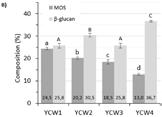
 Figure 1: YCW fractions are characterised by differences in cells surface structures and composition. (A) Scanning electron microscopy images of 4 different YCWs, (B) YCW biochemical composition (% MOS and β-glucans), (C) Binding capacity of MOS or β-1,3-glucan of each of the YCW tested. (Adapted from Rawlings et al., 2023).
Figure 1: YCW fractions are characterised by differences in cells surface structures and composition. (A) Scanning electron microscopy images of 4 different YCWs, (B) YCW biochemical composition (% MOS and β-glucans), (C) Binding capacity of MOS or β-1,3-glucan of each of the YCW tested. (Adapted from Rawlings et al., 2023).
16 | April 2024 - International Aquafeed

The yeast extracts, which represents the soluble fraction of the inactive yeast, and can be used as rich source of nutrients; and the yeast cell wall, the cell external layer (YCW), which is the insoluble fraction of the inactivated yeast. YCW is a source of mannan oligosaccharides (MOS) and beta glucans.
Whole YCW as a source of MOS help increase gut and skin robustness though several demonstrated mechanisms, for example by increasing gut maturity, skin mucus excretion and quality. Continuous dietary supplementation with properly selected, well documented whole YCW benefits is an essential preventive health strategy to help secure health and performance.
Lallemand has established a laboratory dedicated to the characterisation of yeast cells and YCW in particular. In collaboration with aquaculture scientists, the team recently looked into the relationship between YCWs structure and
immune benefits in a model fish, the zebrafish. In this published study (Rawlings et al., 2023), four different YCWs issued from different yeast strains were tested in aquafeed at similar inclusion rates.
Beyond the composition of the YCW (% MOS and % glucans), the study evidenced a relationship between certain YCW structural characteristics (e.g. MOS and beta-glucans chainlength) and the interaction with host-cells receptors (Fig 1). Each YCW elicited a distinct immune response documenting their specific properties with regard to particular infectious or noninfectious pathologies.
This new study provides a perfect illustration of the statement that not all yeasts, nor YCW are equal when it comes to their biological activity; paving the way for precision functional nutrition in aquaculture.































Yeast Cell Wall World Leaders in Microwave Moisture Measurement Oil Animal Feed Coffee Rice Grain Hydro-Probe XT Hoppers, chutes, belt conveyors Hydro-Mix XT-FS Mixers, conveyors, Ducting System Hydro-Mix XT-EX Certified for use in ATEX, IECEx and NEC/CSA Hazardous Locations (Dust) Hydro-Mix HT-EX Mixers, conveyors, Ducting System, High Temperature Non Food-Safe available Non EX available Non EX available enquiries@hydronix.com Contact us for more details hydronix.com Hydronix-Milling and Grain-Advert Mar 2023 215x140mm.indd 1 28/02/2023 13:55 International Aquafeed - April 2024 | 17
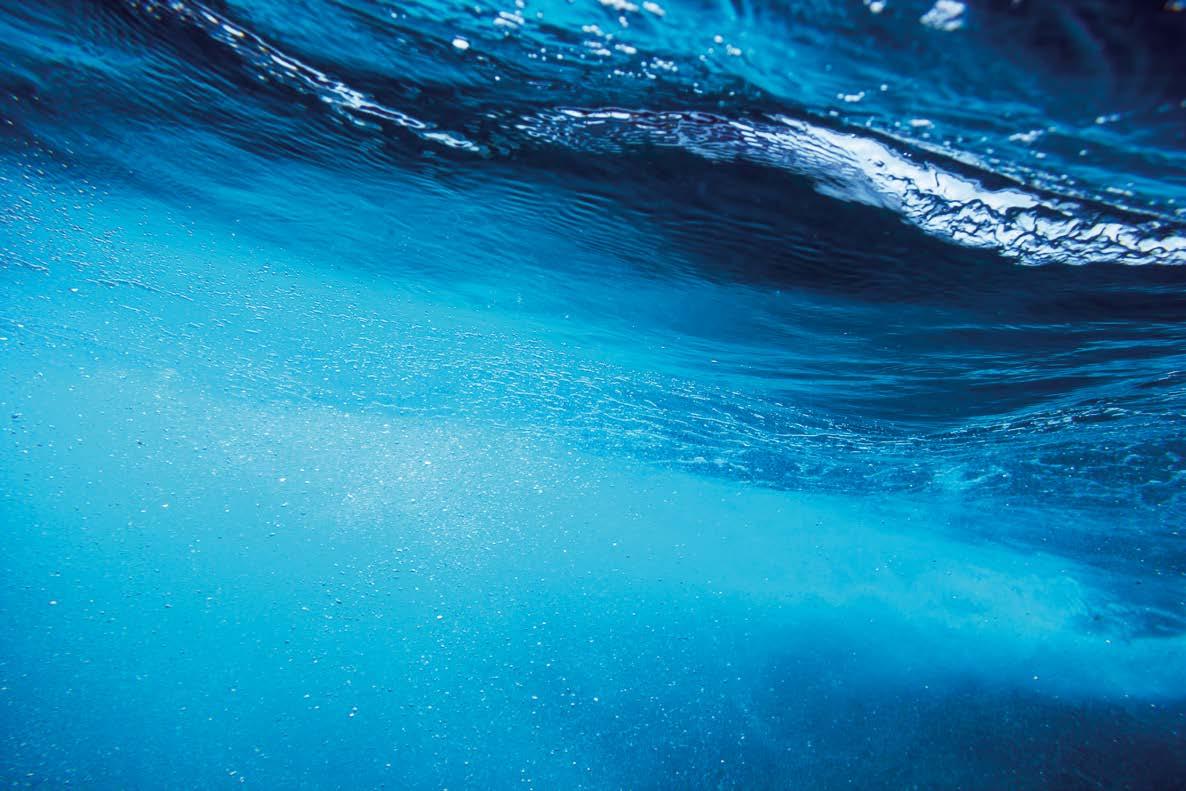
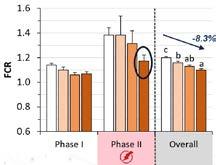
A versatile and cost-effective functional ingredient for bass and bream
A specific YCW product (OPTIWALL) has been developed by Lallemand Animal Nutrition as an all-round and consistent source of MOS and beta-glucans bringing practicality, efficacy and affordability. It has shown strong benefits at reinforcing gut barrier functions and integrity, i.e. robustness, bringing growth and feed performance benefits when fishes are chronically exposed to demanding conditions.
This new product is recommended for the on-growing of seabass and seabream during high density-high temperature periods to help secure production schedule and biological cost.
A recently published study (Leclercq et al., 2023) evaluate the inclusion of this YCW in the diet of European seabass juveniles in a dose-response manner. Results showed:
The YCW can boost performance in a dose-response manner: Growth and feed conversion (FCR) were both improved by up to 6.7percent and 8.3percent respectively.
Mucosal barriers were also improved. Among others, gut robustness, skin mucus excretion and antimicrobial defenses were
Specifically, the YCW helped better maintain FCR and enhanced gut and skin protection barrier when exposed to a chronic challenge (repetitive handling and high rearing density) at the highest inclusion level tested (4.5 kg/T feed) (Fig. 2).
The authors concluded OPTIWALL has the potential to protect the baseline performance and robustness of European seabass and that the feed supplementation strategy can be tailored to the level of challenge and of benefits targeted.

ai1659709269130_IRIDA_PRINT_AD_05-08-22_OUT_102.5x280_ENG.pdf 1 05/08/2022 5:21 pm 18 | April 2024 - International Aquafeed
Figure 2: Effect of different doses of the dietary YCW OPTIWALL on juveniles feed conversion rate (from Leclercq et al., EAS 2023)
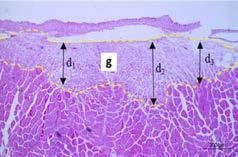

Addressing the cycle challenges
Management of fish transfer and handling are critical for the farm performance. They can generate significant stress, physical and physiological damages with long-lasting hangover impacts. Physical wounds, both macro- and microscopic lesions, are evidently essential to minimize including to prevent secondary infections to which handled-fish are particularly sensitive.
YANG is a new generation yeast products developed by Lallemand using cutting-edge technologies. It combines inactivated yeast fractions from selected strains each produced using dedicated processes. By combining potent and contrasted yeast-microbial patterns, a broad panel of immune receptors are co-activated, including pro- and antiinflammatory pathways, augmenting overall immune agility and responsiveness at gut but also skin and animal level without risk of immune fatigue.
Recently, the product was shown to speed-up skin woundhealing in a model of fish species (Edirisinghe et al., 2023). It was shown in particular to promote the resolution of inflammation, facilitating the subsequent synthesis of novel tissue at the wound base (Fig 3), and wound-closure.
Conclusion
Preserving fish health and welfare though nutrition effectively contributes to preserving biological performance, production cost and volume. Specific yeast cell wall products have shown effective to enhance fish robustness and protect their health, especially during challenging situations. For more information, visit myaqua.info/Lallemand

Our wide range of value-added services and understanding of production and market challenges worldwide, allows us to find the right technology and the most cost-effective solutions for your business in Livestock, Aquaculture/ Aquafeed and Pet industries







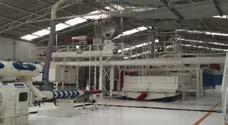


Offers customized development, formulation and manufacturing services for efficient and effective Vitamin and Mineral Premixes, Additives, Farmac, Organic Acids, Pigments, Organic Bypass Fats, etc. with the highest quality standards and according to the needs of its customers in animal nutrition, with exclusive Technical, Professional and Personalized Consulting worldwide










 Figure 3: (A) Transversal view of the skin wound showing delimitation of the newly synthesized granulation tissue and, (B) Surface area of the newly synthesized tissue at the wound base.
Figure 3: (A) Transversal view of the skin wound showing delimitation of the newly synthesized granulation tissue and, (B) Surface area of the newly synthesized tissue at the wound base.
E S E has developed and manufactures its own line of innovative and specialized equipment and systems, with exclusive and worldwide technical services for different processing situations in several capacities, from unique components to full line and complete solutions ENGINEERED SYSTEMS & EQUIPMENT, INC 1564 Hwy.166 E. Industrial Park. P.O. Box 99, Caney, Kansas 67333 USA - Phone: + 1 (620) 306-4100 – Fax: +1 (620) 840-2087 Email: info@eseintec.com - www.eseintec.com Carretera Córdoba a Veracruz Km 342, Zona Industrial, C.P. 94690 Cordoba, Veracruz, México Tel: (+52) 271 751 7350; (+52) 271 751 7396 www.intecmx.com - contacto@intecmx.com INTEC – INTERNATIONAL FEED & FOODS TECHOLOGIES S.A. DE C.V. Supported and Guaranteed with its own very complete and equiped Laboratory with latest Technologies
DISCOVER HOW WE CAN HELP WITH YOUR NEXT PROJECT International Aquafeed - April 2024 | 19

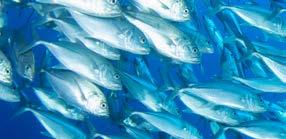
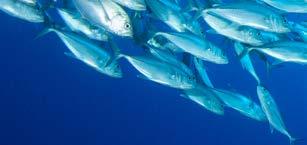
Sustainable Aquafeed Alternatives
The aquafeed industry is full of sustainable innovations, all with significant benefits to the environment. Whilst the population is growing increasingly, so is the human demand for protein. It’s important for the aquafeed industry to meet these nutritional needs whilst also being mindful to protect marine ecosystems.
What does it mean to be sustainable? The United Nations Brundtland Commission gave the definition of ‘meeting the needs of the present without compromising the ability of future generations to meet their own needs.’ Relating this to the aquafeed industry, sustainability needs to look at reducing the environmental footprint whilst meeting the global demand for seafood.
Commercial fish feed contains resource intensive fishmeal and fish oil and overfishing and becoming too reliant on harvesting wild fish to feed farmed fish creates problems in marine ecosystems. Looking for a sustainable solution in the aquafeed industry going forward needs to encompass many criteria, including cost-effectiveness, feed efficiency, and nutritional value, for fish producers to realistically adapt the methods.
So, what options do we have?
Starting with Plant based proteins – this includes sources such as soybeans, peas, canola, sunflower, and corn.
Plant based proteins are a viable alternative to marine-based fishmeal, they’re more cost effective due to their availability and established supply chains. Reducing the demand for marine resources can help limit overfishing, and in comparison, to traditional aquafeeds it has a less negative environmental impact. Advances in feed formulation and processing have
vastly improved nutrient profiles and palatability, so plant-based proteins can indeed be cost-effective and produce a stable supply.
However, there may be nutritional requirements for specific species that such an alternative would miss, requiring additional processing or supplementation. You also need to consider how sustainable a plant really is – for example large-scale soy farming requires mass deforestation and water pollution. What once appeared as a sustainable alternative, becomes a part of the problem when you examine the source. Finding sustainable alternatives necessitates careful sourcing.
Next, we have algae-based feeds. This involves using Algae, an ingredient rich in omega-3 fatty acids and other essential nutrients that have a nutritional profile similar to fish oil. Algae based feeds are currently being explored as a sustainable alternative to fish oil in aquafeeds and can help reduce the pressure on wild-fish populations.
The advancements have the potential to reduce production costs over time with premium pricing due to the nutritional benefits of omega-3 fatty acids. The advancements in optimizing algae-feed requires further research when applied to difference aquaculture species. Algae feed can also be more expensive than other traditional aquafeed.
Reducing reliance on fish oils sourced in wild fisheries would benefit the marine eco-system greatly, and limit overfishing. Algae can be cultivated using phototrophic or heterotrophic methods, therefore resulting in lower environmental impacts. In current production, however, costs are high, and there is limited scalability, so widespread adoption in the current market is limited.
Overall, Algae-based feed is a positive environmentally friendly and nutrient-rich seafood product alternative.
Another innovation in sustainable aquafeeds to consider is insect meal. Produced from insects like the black soldier
20 | April 2024 - International Aquafeed
“Overall, Algaebased feed is a positive environmentally friendly and nutrient-rich seafood product alternative"
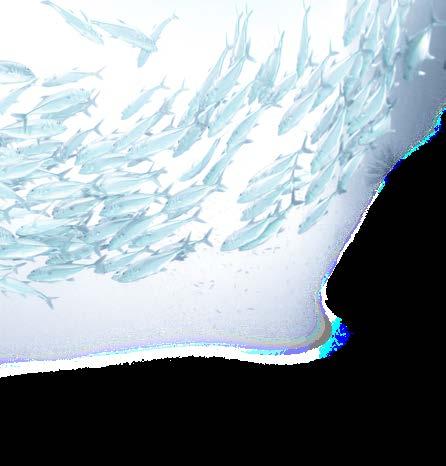
fly larvae, mealworms, and crickets, Insect meal is gaining popularity among various feed industries, including Aquaculture.
Insect meal is rich in protein and environmentally sustainable in comparison. Insects can be raised on organic waste, which is then converted to valuable protein, reducing the ecological footprint of feed production. Insect farming also has a smaller ecological footprint compared to traditional aquafeed sources. Being rich in protein, Insect feed is highly digestible and palatable, suggesting it can lead to efficient growth rates in aquaculture species.
There is significant potential in the insect-feed sector, as it
provides an efficient conversion of organic waste into valuable protein, and therefore lower production costs. The research and technology in insect-feed is ongoing, and relatively new to the industry, so still requires significant initial investment costs for infrastructure. However the cost of insect meal can be limiting, and the industry is still striving to optimizing production for mass production.
The growing interest in circular economy practices and waste reduction is beneficial to insect-feed producers, as it is driving market demand at this current time, however its application is not as commonly used in aquafeeds, and still requires scaling up production, which may face challenges in terms of infrastructure and public acceptance.
Other considerations are By-product utilisation – using by products from other industries (such as agriculture and food processing waste) can be a sustainable alternative in reducing waste and enhancing resource efficiency. Also using recycled and upcycling ingredients is an option, such as recycled fish processing by-products, which is great in promoting circular economies.
To summarise, the above solutions are just some of the current sustainable alternatives being explored in the aquafeed industry, but the options are out there! The challenge of shifting to sustainable aquafeeds is multifaceted, requiring a critical eye to ensure the solution is positive for environmental preservation as well as meeting the global nutritional needs, serving the present and the future. Solutions needs to be realistic and attainable for the industry to adopt them, and collaboration between the industry, researchers, policymakers, and consumers is key for paving the way to a more environmentally conscious aquafeed industry.

International Aquafeed - April 2024 | 21

Changing the South African recycling landscape
 by Dean Smorenburg, CEO, Maltento, South Africa
by Dean Smorenburg, CEO, Maltento, South Africa
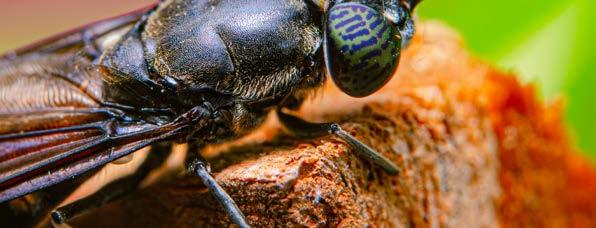
The Black Soldier Fly is changing the South African recycling landscape, one larva at a time. Black soldier flies are able to turn what used to be a throwaway by-product from the beer industry into a high-performance, high-nutrient ingredient used in pet and aquaculture feed. And many people in South Africa, including those in the beer industry, don’t even know about it yet.
The humble black soldier fly is already diverting a whopping 400,000 kg of agro-processing waste and by-products monthly at a fly farm in Cape Town, with local projections indicating that this figure could increase up to 600,000 kg by the end of the year They are revolutionising the petfood and beer industries, putting South African scientists and engineers at the global forefront of agro-processing and sustainability practices through their innovative exploration and understanding of insect biotechnology. Rich in functional proteins, fats, and essential nutrients, black soldier fly larvae provide a sustainable and nutrient-dense alternative to traditional protein sources. By taking recycled waste from the beer-making process and feeding it to the larvae, one is able to create a feed solution that is both economically and environmentally friendlier than animal-based protein, which uses 95 times more natural resources per kilogram than insectbased protein. The black soldier fly protein is also hypoallergenic, contains antimicrobial peptides, and can offer support for overall gut health in pets.
Another by-product
The black soldier fly larvae are not only confined to being good sources of protein and oils; they are actually dual-purpose insects. They produce another by-product that has the ability to revolutionise the soil industry: frass.
Frass is the excrement of black soldier fly larvae. This often overlooked substance holds substantial nutritional value, serving as a composted soil amendment product that can be used almost anywhere. Frass enhances soil fertility, promotes nutrient cycling and plant growth, and improves soil structure, contributing to sustainable agriculture practices for South African communities. Frass can also be used to create a closed-loop system for fields where brewery grains are cultivated. Its application to the area helps to regenerate the soil and planting areas, allowing more grain to grow in healthy soil. Once the grain is harvested and spent, it is sent to agro-processing factories to be fed to the larvae, which in turn creates more frass, which is then fed back into the soil once again. Frass has no heavy metals or pesticides and can outcompete many other organic or non-organic alternative in terms of soil regeneration. This creates a perfect closed-loop system that is good for the environment.
When the fly larvae ingest the spent brewers’ grain, these nutrients feed their functional protein and fat development and essential amino acids, creating a nutrient-dense functional protein ingredient that supports the overall health and vitality of pets. The proteins derived from black soldier fly larvae are highly digestible, promoting steady nutrient absorption. These ingredients also contain beneficial compounds such as chitin and
22 | April 2024 - International Aquafeed
antimicrobial peptides, contributing to healthy immune system support for the pet and aquaculture market.
As these processes slowly become more popular, it is crucial for us to assist in the promotion and adoption of these new and enhanced feed solutions. By incorporating black soldier fly-derived ingredients, pet food manufacturers can increase the nutritional quality of their products, therefore improving the quality of life of our pets.
There has been significant international interest in South African companies that are pioneering these cutting-edge feed solutions. Overseas, a number of industry stakeholders and pet food distributors are looking for partnerships with locally-based pet-feed suppliers in South Africa to gain access to this level of innovation. There is a global appeal for these advancements in the market, and this positions South Africa as a leader in the development of forward-thinking, environmentally conscious pet food solutions.
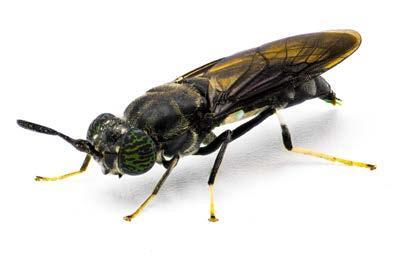
footprint of pet feed production. The international interest in South African companies for access to these feed solutions signals not only the global demand for sustainable practices but also presents an opportunity for increasing export potential.
The steady adoption of black soldier fly-derived ingredients in South Africa’s feed industry holds incredible potential for numerous long-term benefits across the pet-feed and beer brewing sectors. The use of insect biotechnology shows us an innovative
Insect biotechnology is revolutionising how we think about high-quality functional protein ingredients and derivatives. South African pet owners and local beer fanatics should support these initiatives for producing pet food ingredients and soil amendment products that contain ground-breaking benefits for our soil, pets,


International Aquafeed - April 2024 | 23
PRODUCTION SHOWCASE
Fish Grader Helios 60 by Faivre
Helios 60 grader combines speed with precision sorting. Helios 60 is a robust grader. It is also suitable for sea water farming.
Its two sorting channels give it a high efficiency and a quick return on investment. The two channels give you the performance you need for the most rigorous grading.
The Helios 60 grader can be adapted to all needs. It is easily movable even on a damaged floor, thanks to its three large inflatable wheels. The two stainless steel jacks placed at each extremity of the machine can be used to raise the grader by up to 35 cm if necessary and to adjust the inclination of the grading plane precisely in order to improve the precision of your sorting.
Their Helios 60 grader offers precise manual adjustment of each size’s width in the outlet hopper. Large handles are used to slide a flap over a distance of about 30 centimetres and thus adjust the sorting precision without changing the vernier setting. The Helios 60 grader is equipped with two sliding flaps to adjust the machine’s three sizes.
www.faivre-aqua.fr
myaqua.info/qwUk

TwinLab-F 20/40 by Brabender
The TwinLab-F 20/40 scores highly due to it being a compact extrusion solution with integrated drive. This space-saving and economical solution texturises the widest range of different materials. Develop new formulas and standards or simulate processes exactly to scale. It is a standalone solution for food extrusion at lab scale as it modifies and texturise various materials, such as for example proteins, starch, fish feed, cereals and pasta.
With a rotational speed of up to 1200 rpm, this extruder offers the user greater flexibility when it comes to energy input and throughput. What’s more, the cylinder is split horizontally and is hinged at both sides, which makes the segmented screws easily accessible. The sample is inserted and then extruded by the twin-screw extruder. During the analysis, sensors and controllers measure relevant values, such as temperature and pressure. www.brabender.com
Horizontal dryers by Extru-Tech
Extru-Tech horizontal dryers are the leading industry tool for the production of a diverse range of food and feed products, including pet and aquatic foods and foods for human consumption. Extru-Tech has taken dryer technology to the next level with the new Advanced Feature Dryer, which features improved performance and new sanitary dryer features.
The Advanced Feature Dryer is renowned for its balanced Air Circulation System. The addition of variable frequency direct drive fans provides uniform airflow across the entire width of the beds minimizing moisture deviation and providing flexibility to maintain even efficient drying regardless of product size, shape and density. The result is a finished product with less than 1/2 percentage point variation in moisture. Our new, redesigned chute is complete with span and speed controls for “in-process” adjustments, providing accurate product spread for even bed depth.
www.extru-techinc.com
myaqua.info/vaNW
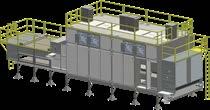

24 | April 2024 - International Aquafeed
AQUA
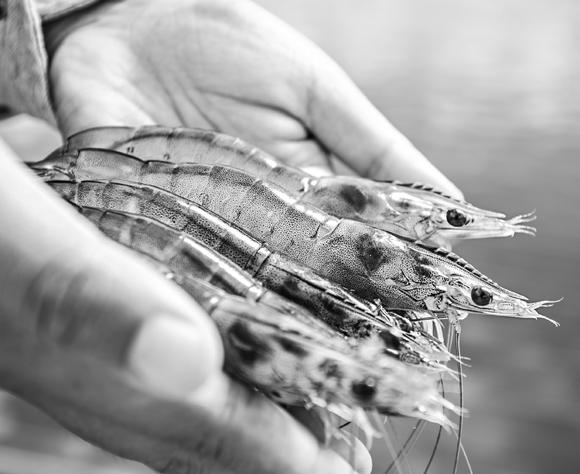

FRANCE
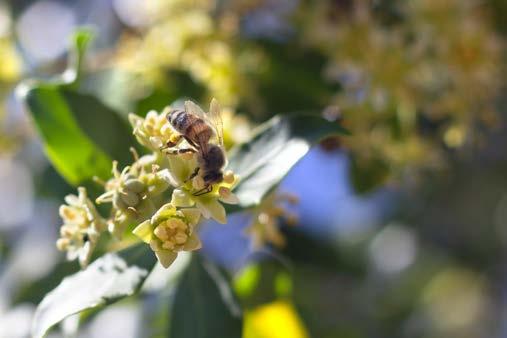
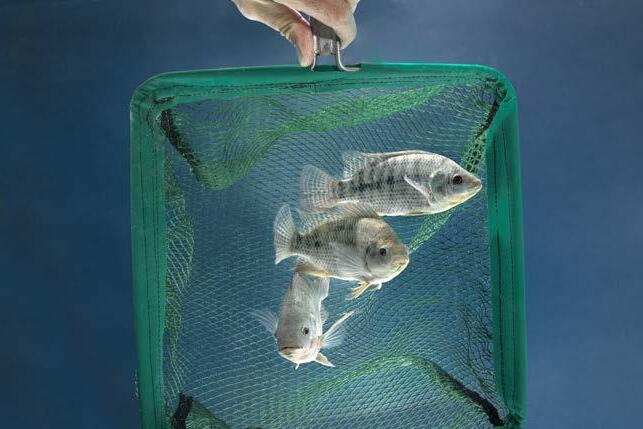


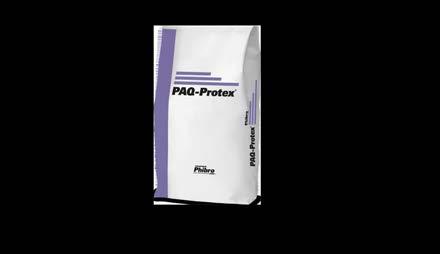
Promotes gut health and increases the ability to absorb nutrients from feed. Modulates the immune system for disease resistance. Improves feed conversion and growth performance. Contributes to reduce the load of parasites. Reduces ammonia levels in the gut and in the culture water.




Protecting
a
all starts with a
PAQ-Protex TM HEALTHY ANIMALS. HEALTHY FOOD. HEALTHY WORLD.®
your
for more information:
info@phibro-aqua.com 2024 Phibro Animal Health Corporation, Teaneck, NJ 07666 Phibro, Phibro logo design, PAQ-Protex and Healthy Animals. Healthy Food. Healthy World are trademarks owned by or licensed to Phibro Animal Health Corporation. is a 100% natural feed additive proven to improve gut health in shrimp and fish
Your Investement, Naturally.
Contains
saponin blend from Yucca schidigera and Quillaja saponaria plants It
healthy gut
Contact
local Phibro Aqua specialist
www.phibro-aqua.com
PAQ-Protex TM
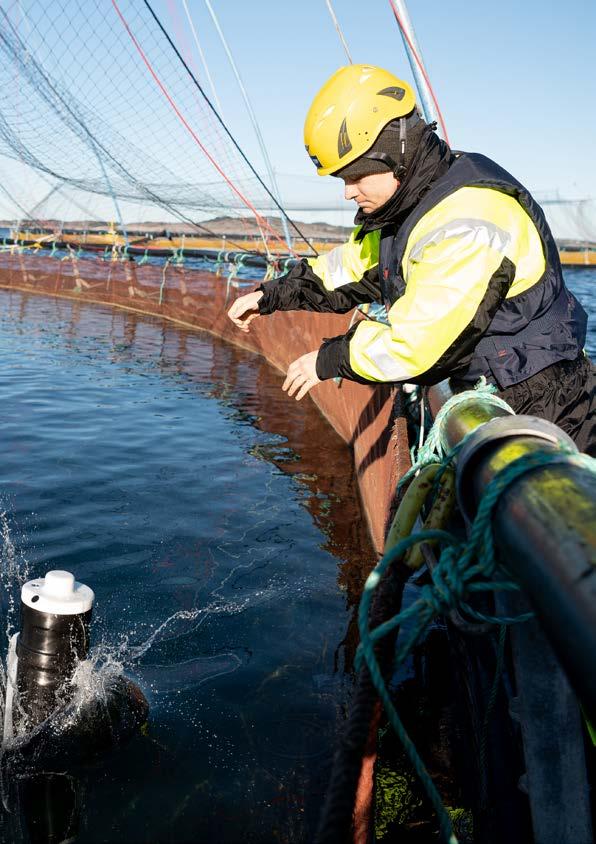
FISH FARMING TECHNOLOGY 27 Fish Farming Technology - Volume 27 - Issue 4 - April 2024 28 EDITOR: Erik Hempel 30 Novel sea lice vaccine research leaps forward to next stage 32 Transparency Solutions Unveiled at SEG Barcelona 33 Phileo by Lesaffre unveils Aquasaf Shrimp 33 Fluctus enters Chilean market 34 Aquaculture Denmark 38 Smart decisions: Aquabyte Revolutionising Aquaculture with Advanced Technology 44 REVOLUTIONISING AQUACULTURE 48 Advancing Gender Equity in Mediterranean and Black Sea Fisheries 54 TECHNOLOGY SHOWCASE
2024 Fish Farming Technology - Volume 27 - Issue 4 - April 2024
APRIL
FISH FARMING TECHNOLOGY
About 25 years ago, I moved to Singapore to try and promote Norwegian aquaculture technology. A bold move, and, as it turned out, way ahead of its time.
Norwegian aquaculture technology companies at the time were not that many, and they were in the early stages of their development. All their technology was salmon-related, but the Norwegian salmon success was a good selling point. However, we did not find many investors who wanted to put money into this technology.
Today, the situation is very different. The technology companies have grown, and they have been met by a vast array of international competitors. Norway is certainly not alone in this field anymore.
It is not known exactly how big the market for modern aquaculture technology is. But it is big. A recent study undertaken by the Norwegian Ministry of Trade, Industry and Fisheries estimates that the global market for aquaculture technology, services and know-how over the next 5 – 7 years could grow to about US$10 billion.
While most of the technology sold today is targeting landbased operations and the traditional floating cage operations, the study points out that this may change soon. When offshore installations have been properly tested and documented, investments in offshore fish farming will grow rapidly, and this sector will take over as the leading sector in terms of investments. Of course, offshore fish farming involves enormous investments in equipment, so that is not so strange. It was estimated that the Norwegian export potential alone would amount to about US$3.2 billion for offshore technology, US$1.5 billion for land-based technology, US$ one billion for semi-closed floating technology, and about US$0.9 billion for know-how and services.
The study also pointed out that today’s technology can either be used directly or adapted for use on a number of different species. Thus, it seems to be a matter of learning about the new technologies on the part of existing farmers so that they can make use of this technology.
An article in the magazine Nature some time ago showed that large areas which are not today actively producing marine aquaculture have the potential to engage in such operations in the future. In fact, the article concludes that practically every country with a coastal region would have promising potential to engage in marine aquaculture. The region with the greatest potential for marine aquaculture is Southeast Asia and the area north of Australia, according to the Nature article.



Erik Hempel
The Nor-Fishing Foundation
I can see a number of problems that will have to be overcome before that is possible, though. Many of the regions are exposed to very heavy storms and high seas. An example could be the southwest coast of Africa, which lacks protective islands and bays. Other regions lack the infrastructure necessary to get access to inputs and transport the harvested fish to market, as is the case in Indonesia.
Of course, such barriers can be overcome. But it takes money and time. Building the logistics infrastructure in a huge country like Indonesia is a formidable task that will not happen overnight. But perhaps that is why we need to think outside the box. Are there solutions to the logistics problems in Indonesia that will not require such heavy public investments? If there are, Indonesia could soon be the largest aquaculture producer in the world. Some may have seen the possibilities in this. Singaporeans are shrewd people with a highly developed sense of business. And Singapore is in the process of building up expertise around its Marine Aquaculture Centre on St. John’s Island. It will be interesting to see how this centre will develop and how it will contribute to the region when it comes to aquaculture development.
The idea of the Marine Aquaculture Centre was born over a good dinner 25 years ago. I happened to be present. It did not take long for the Singaporean Government to warm up to the idea, and construction of the Marine Aquaculture Centre started just a couple of years after the idea had been launched.
Today the centre is on track to becoming a hub for aquaculture technology and development in Southeast Asia, and with one of the most promising regions just south of it: Indonesia. Indonesia is not plagued with the annual storms that much of the rest of the region faces every year. The waters are pristine. There is ample protection offered by the many islands, bays and inlets. So mark my words - this is where the future marine aquaculture could well be centred.

Meet the International Aquafeed & Fish Farming Technology team at these up coming events 6-7TH MAY - BERGEN, NORWAY May 15-17 - İstanbul, Türkiye


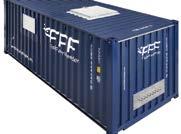

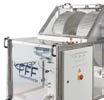















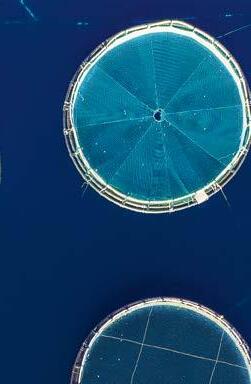
Novel sea lice vaccine research leaps forward to next stage
A team of experts investigating the potential of a pioneering vaccination against sea lice has secured funding to take its research to the next stage, helping to address one of the aquaculture sector’s perennial challenges.
Partners from the University of Stirling’s Institute of Aquaculture, Aquatreck Animal Health SL and Moredun Scientific have been awarded almost UK£50,000 from the Sustainable Aquaculture Innovation Centre (SAIC), following promising findings of an initial proof-of-concept phase which concluded last year. The global cost of protecting, managing and treating salmon affected by sea lice is estimated at up to US$1 billion per year.
Join the fish revolution

Phileo’s probiotics and active yeast fractions are designed for hatcheries and growing farms to support health, feed efficiency and growth performance . Our sustainable solutions bring innovative responses to fishmeal reduction stakes and environmental challenges. Act with nature for animal care.
The latest stage of the research involves assessing the impact of the novel vaccine technology against adult lice, building on the results of the first part of the research which looked at larval stages and identified a gut protein required for protection. The team is using advanced recombinant expression technology for injection vaccination and, if successful, the technology could be scaled up to make mass antigens available to later be applied via salmon feeds as an oral vaccine.
The formula has been specifically developed to trigger an immune response and create elevated antibody levels in the bloodstream of fish, helping to impair sea lice development and reproductive capacity following sea lice feeding on the fish. By targeting mature lice, the vaccine could also reduce the number of parasite offspring.
Scaling up the technology involved in vaccine development is costly and complex, often acting as a bottleneck for commercialisation in any sector. However, during the first phase, the researchers successfully identified a promising route to market by using yeast expression technology to create the recombinant proteins needed for the vaccine at scale.
Dr Sean Monaghan, lead researcher and lecturer at University of Stirling’s Institute of Aquaculture, said: “Finding a vaccine-based solution for treating sea lice would be a huge development for the aquaculture sector globally, with widespread impact for fish, farmers, the supply chain and consumers. We are hoping that this second stage of the project will demonstrate the efficacy of the vaccine for protecting Atlantic salmon against adult lice and help to build the scientific evidence base.
“The Covid era has had a big part to play in increasing people’s understanding and changing perceptions of vaccines to the point where this kind of treatment for animals is now more widely acknowledged as a positive way to tackle health challenges with less intervention. Around the world, different groups including both academics and pharmaceutical companies are now looking at the potential for sea lice vaccines with results beginning to emerge. Sea lice vaccination is just one option, but it has the potential to transform the way the sector deals with one of its biggest ecological concerns.”
Heather Jones, CEO of SAIC, added: “After a highly promising first stage, it is great to see this research progressing because of a successful collaboration between sector experts and researchers. An alternative treatment for sea lice would have significant, positive outcomes for fish health and welfare, which is a priority area for SAIC. Projects like this, which demonstrate innovation in finfish health, are crucial to creating a more environmentally friendly and economically impactful future for the sector.”
Visit our new website www.phileo-lesaffre.com 30 | April 2024 - International Aquafeed aquaculture news
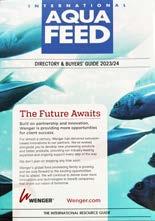

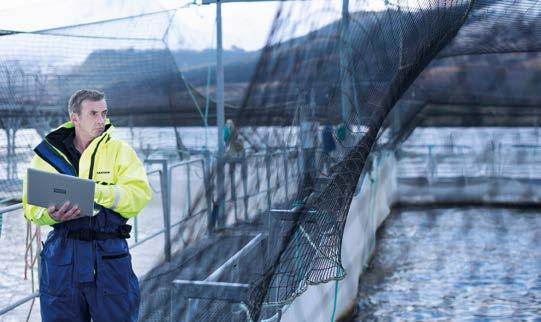

DIRECTORY & BUYERS GUIDE THE WOR lD'S lEADING DIRECTORY FOR AQUACUlTURE GET YOUR FREE lISTING! https://myaqua.info/iafd Aquaculture with KAESER reliable as the tides www.kaeser.com/aquaculture International Aquafeed - April 2024 | 31 aquaculture news
Transparency Solutions
Unveiled at SEG Barcelona
Stakeholders from across the aquaculture supply chain will be catering at Seafood Expo Global (SEG) in Barcelona, just weeks away. As part of the SEG conference program, the farm assurance brand Global G.A.P will be hosting a panel discussion focusing on supply chain transparency in Europe and worldwide. The brand’s farm assurance standards for aquaculture have been developed over the past two decades and include timely topics like food safety, environmental sustainability, workers’ well-being, animal welfare and supply chain traceability.
SEG brings industry experts together from around the globe and provides a format for attendees to glean the latest actionable information to confront today’s challenges. The SEG conference program will feature educational sessions on corporate social responsibility, sustainability, traceability and transparency. The informative discussion on supply chain transparency hosted by Global G.A.P is scheduled to begin at 2pm on 23 April and will be held in Conference Centre 5, Conference Room CC 5.2.
The panel will be moderated by Marco Frederiksen, Director of Eurofish Magazine, who will guide the discussion through the topic of supply chain transparency, both in Europe and beyond. Panel members engaging in the discussion will be experts selected from across the
aquaculture industry. Attendees at the discussion can expect to hear diverse perspectives from key areas of the supply chain.
The panel will include the following representatives:
Audun Lem, Deputy Director of the Fisheries and Aquaculture Division and Secretary of the FAO Committee on Fisheries (COFI)
Dawn Purchase, Aquaculture Programme Manager at Marine Conservation Society
Teresa Fernandez, CSR & Sustainability Senior Manager/ Seafood & Added Value Europe at Hilton Foods
Carlos Tavares Ferreira, Sustainability and Quality Director at Stolt Sea Farm
Remko Oosterveld, Aquaculture Key Account Manager at Global G.A.P
These diverse perspectives will highlight ways that all individuals in the supply chain can unite behind the common goal of promoting responsible, safe and sustainable aquaculture.
According to Global G.A.P., the discussion is expected to address the impacts of existing and upcoming supply chain legislation in the EU and will highlight how voluntary certification can encourage good aquaculture practices throughout the supply chain.
Other topics expected from the discussion include a holistic approach to improving traceability through crosssector collaboration, and how data-driven traceability systems, including traceability of compound feed raw materials like soy, fishmeal, fish oil and palm oil, promote

LET’S GROW TOGETHER Temperature Adapted Feeds TM Temperature Adapted Feeds TM Temperature Adapted Feeds TM Temperature Adapted Feeds TM Temperature Adapted Feeds TM WWW.ALLER-AQUA.COM The Spring Edition feed contains high doses of vitamin C to support and strengthen the fish during the challenging transition period - at no extra cost! Vitamin C supports the formation of red blood cells and improves oxygen uptake Vitamin C supports skin repair and wound healing Vitamin C improves stress resistance Available for trout, carp, sea bream and sea bass. 32 | April 2024 - International Aquafeed aquaculture news
Phileo by Lesaffre unveils Aquasaf Shrimp
Phileo by Lesaffre has announced the release of Aquasaf Shrimp, a comprehensive program providing practical guidance on the use of fermentation solutions for shrimp producers. The program builds on a decade of research and development on yeast and bacteria, probiotics and postbiotics. It also highlights case studies conducted with numerous institutes and commercial partners around the globe.
Comprising of three key pillars, Aquasaf Shrimp provides knowledge and applied solutions to some of the most important challenges associated with intensive shrimp farming. These challenges include mortalities caused by Early Mortality Syndrome (EMS) or White Spot Disease (WSD), inconsistent growth and feed performances resulting from chronic oxidative stress and guy dysbiosis, as well as the dependency on marine ingredients and antimicrobial substances.
“We’re beyond excited to introduce Program Aquasaf Shrimp” said Dr Jean-Benoit Darodes de Tailly, Global program manager for aquaculture at Phileo by Lesaffre. “Our program represents a complete shift in the way we approach the problem, aimed at providing a transparent view of the mechanisms of action of our solutions and their benefits across various aspects of health, nutrition and in different farming solutions. It is a tool that supports and empowers professionals with knowledge, assisting them in the decision-making process when developing preventive care strategies”.
Fluctus enters Chilean market
Equipment supplier Fluctus has signed a commercial agreement with Chilean company ITG for the sale of the company’s products in Chile. And also, Fluctus will be able to sell ITG’s products on the Norwegian market.
“We are experiencing a great deal of interest in our products, especially water feeding, from Chilean producers. ITG is a company with good experience and solid relationships in the market. They have more than 20 years of experience

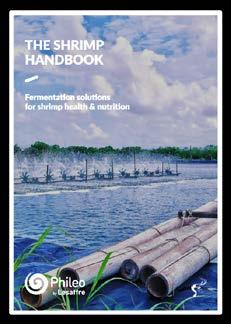
delivering technology and service to the industry, both nationally and internationally, and we are sure that they will represent our products in a good way. They provide us with the local expertise and proximity needed to provide customers with the best solutions,” says Harald Lien, Fluctus CEO.
“At the same time, they (ITG) have an interesting product portfolio of cameras, sensors and nanobubble oxygenation that will be available to our customers in Norway,” continues Lien.
Claudio Chanceaulme, general
manager of ITG Chile, expressed his enthusiasm for the agreement, highlighting the value it will bring to the Chilean market:
“This agreement allows us to expand our offer of products and solutions that aim at sustainable production, consolidating us as a comprehensive supplier in the local industry and a versatile and reliable business partner.”
Fluctus will be present at the ITG booth at the Aqua Sur show in March, and ITG will be present at the Fluctus booth at HavExpo (Bergen, Norway)






Feed & Additive Testing, Vaccine Development & Testing, Ecotoxicology and more 30+ Supported Species incl. Salmon, Shrimp, Trout, Tilapia, Sea Bream, Sea Bass 20+ Years Experience Supporting Product Development for Global Clientele ABT Innovia Your Aquaculture Research Partner
| aquabt.com International Aquafeed - April 2024 | 33 aquaculture news
bdd@aquabt.com
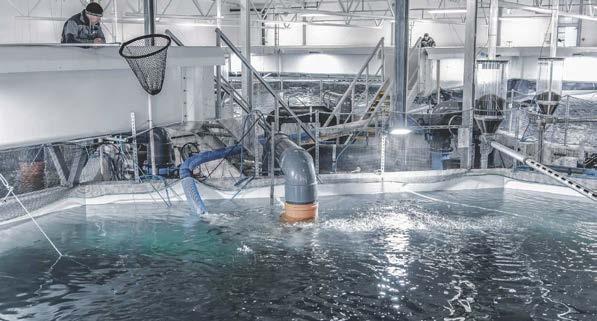
aquaculture
DENMARK
A world leader in fish farming technology
by Martin Winkel Lilleoere, Head of Fish Tech, Danish Export Association, Denmark
Through cooperation and years of innovation, Danish suppliers to the global aquaculture industry strive to provide the most innovative, sustainable and energy efficient solutions.
With around 200 farms spread across the country and a production of 56,000 tonnes per year, aquaculture in Denmark is a relatively small industry seen in a global perspective. But behind the farmers is a large industry of feed and tech suppliers to the aquaculture industry, and the Danish companies have a solid reputation of providing high-end solutions to fish & shellfish farmers worldwide.
Having a long history as a maritime country, surrounded by water, fish and seafood has always played an important role in Denmark and for Danish export. As the Danish aquaculture sector is quite limited in size, a lot of the equipment developed and produced in Denmark for the industry is exported to countries worldwide.
Denmark for sustainability and efficiency
Danish strengths such as sustainable solutions, energy efficiency and high-end products are seen across industries and apply to the suppliers in aquaculture as well.
Through cooperations with other tech suppliers and the fish farmers worldwide, the Danish tech suppliers keep developing their solutions to become more and more sustainable. In the agenda of reaching sustainable development goals, a sustainable aquaculture sector is crucial.
Through decades of research and development and through close cooperation with farmers and scientists, Danish suppliers provide some of the most energy efficient solutions that does not only save emissions but also money in the long run.
New techniques and a constant focus on optimising existing solutions, using data to monitor the farms and making sure that everything runs perfectly means less breakage, less maintenance and a longer lifetime for components throughout the farming facility.

FISH FARMING TECHNOLOGY 34 | April 2024 - Fish Farming Technology
Danish solutions might not be the cheapest at first sight but investing in solutions that will last longer and that consumes much less energy than other solutions, means that the total cost of ownership will be relatively low.
Efficiency is also about time and about making as much of the farmed seafood as possible. Making sure the water quality and the conditions for the fish are optimal, will contribute to a higher and better output.
When it comes to processing, which is closely linked to the aquaculture industry, having quicker production lines that process and freeze the fish quickly and assuring the precision that makes sure that as little as possible goes to waste, is key to optimise the output and the sustainability of the global aquaculture value chain.
Leading in fish farming and tech
Despite its size, Denmark is one of the world’s leading countries within export of fish and shellfish. More than 90 percent of all Danish fish and shellfish is exported all around the world. It’s a billion-kroner industry if you include fishing and processing.
In 2022 the gross output from Danish aquaculture alone was DKK 1.6 billion, and then comes the added value of the fish been processed.
Understanding the needs of the operators is key to providing them with state of art equipment. Therefore, we see an extensive cooperation between stakeholders in the industry from fish farmers worldwide to Danish suppliers of feed and equipment and even scientists and authorities to keep improving the strengths within the industry, including energy efficient equipment, tailormade feed and the most innovative processing equipment.
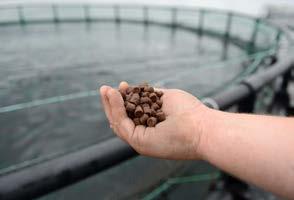
of fishing, several Danish companies evolved into innovative providers of equipment and seafood of high food quality and safety. Equipment for e.g., fileting, processing, and freezing seafood is provided and though innovation in a competitive business the suppliers try to keep in front of the development. As Denmark is a relatively small country and the home-market thus limited, most suppliers are exporting companies, selling their products and solutions all over. With the continuous fast growth of the aquaculture sector, most of the relevant Danish companies has a strategy for being a part of it.
Better feed = better fish
Denmark is home to two of Europe’s largest producers of fish feed, Biomar A/S Aller Aqua A/S. Both companies are present worldwide and produce feed for a wide range of species.
Understanding that feed is not just feed has put the companies

Legal business advice:
• Mariculture and Aquaculture leases
• Aquaculture and mariculture disputes
• Commercial fishery issues
• Acquisition and ownership of fisheries
• Registration of fishing rights
• Defence of fisheries prosecutions
• Seizure of fishing vessels
• International fishing licenses
• High seas fishing
FISH FARMING TECHNOLOGY WWW.AQUARIUSLAWYERS.COM.AU +61 (02) 8858 3233
Fish Farming Technology - April 2024 | 35
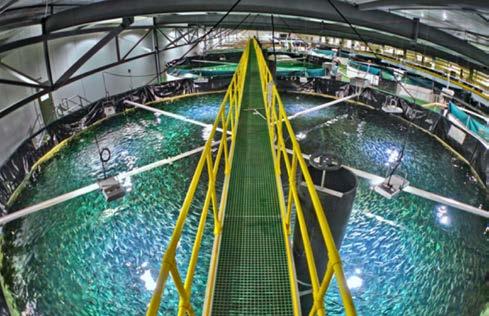
Existing for more than 60 years both companies have developed a lot over the years, and their products have become more and more specialised and tailormade for different species and environments.
The right feed is obviously key to secure healthy and thriving fish, but the Danish feed producers has taken it further. With special formulas they have invented feed that can minimize some of the most common illnesses and health issues in aquaculture, thus leading to a higher output and much better quality of the fish.
In 2023, Aller Aqua Egypt was awarded Crown Prince Frederik International Business Award for their effort to promote the Danish feed in Egypt. But the subsidiary to the Danish company did not just receive the royal honours based on their revenue. The main reason for the jury to choose Aller Aqua as recipient was the way the company had engaged in the development and growth of
the aquaculture sector in Egypt and helped the country build an industry to provide sustainable food for the growing population.
This is just one of many examples that Danish providers to the industry really understands the markets and have a vast knowledge about the industry and therefore are much more than just tech providers. They are important business partners for farmers worldwide.
From water tech and marine to aquaculture
Looking to set up an aquaculture facility, you basically just need to look to Denmark to find all necessary farming equipment. From tanks and pumps, to filtering systems and water purification Danish suppliers cover it.
Denmark aims to be one of the global green leaders within strength positions in water technology, the maritime sector, and in

FISH FARMING TECHNOLOGY 36 | April 2024 - Fish Farming Technology
energy efficiency. This means that Denmark has many companies in these sectors as well as skilled engineers and other tech experts to keep developing solutions to the global industry.
Many of these solutions are directly or with only minor moderations directly transferable to the aquaculture industry, meaning that many companies have been able to expand their activities into this industry. Energy efficiency and sustainability is what the Danish solutions generally revolve around. It could be pumping or control systems consuming less energy or advanced monitoring systems ensuring optimal operation or e.g., water quality. Knowing that optimal forming conditions gives a higher production, every piece of equipment should contribute to an optimized and energy efficient system.
Ready-to-go-solutions
Since the start in the early 1980ies, where eel farming in closed, recirculating systems was initiated Denmark has been involved in recirculation technology and the further development of recirculating aquaculture systems (RAS). Based on this early research and the subsequent establishment of commercial RAS for eel farming, Denmark became home to a number of equipment providers as well as major RAS turn-key providers. These companies developed the skills and knowledge to take care of the entire process from the initial project design over project engineering and setting up the entire aquaculture system.
With the fast development within RAS, the larger and larger systems being built, and the concomitant need for larger companies, more employees, and the need for substantially stronger capital base several companies have now been internationalized and often owned by larger corporate interests. Nevertheless, the activity and employment within the area still has significance in Denmark. Danish companies have delivered RAS to countries all over the world, and working closely together with farmers abroad is considered a way of staying on top of the needs of global aquaculture.
Danes aiming for new markets
So, what’s in the pipeline for the Danish suppliers to the global aquaculture industry?
The following years offer great potential for the Danish companies, as the global aquaculture sector is growing, and the production rises each year.
Traditionally, Norway has been an important market for Danish suppliers, but now Danish companies are also looking to other parts of the world like South America, Scotland, Faroe Islands, Iceland and the Middle East.
In the summer of 2023, a Saudi delegation visited Denmark to learn more about the opportunities to cooperate with Danish suppliers. The Saudi delegates and the Danish suppliers had some fruitful meetings and the interest in building projects in Saudi Arabia seemed mutual, so there might be new opportunities for the Danish companies in the Saudi region in the years to come.
As these developing markets not only need equipment but also a great deal of knowhow and knowledge about how to produce seafood most efficient and sustainable, Danish tech and feed providers have good opportunities to enter the new markets and maintain a strong position.
Succeeding in new markets require a joint effort from Danish stakeholders including the companies of course but also network organizations, authorities and marketing consortiums. Standing together as a whole industry instead of entering individually multiplies the chances of success and shows potential customers and business partners that Denmark is a one-stop-shop for aquaculture equipment.
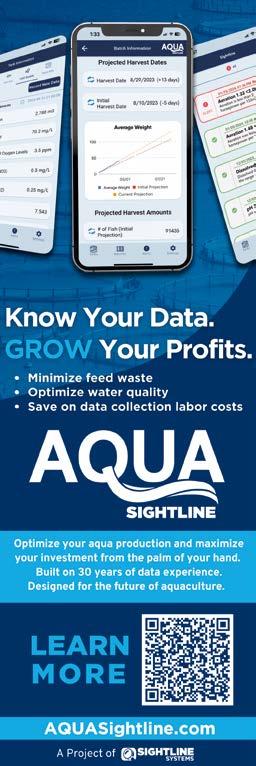
FISH FARMING TECHNOLOGY Fish Farming Technology - April 2024 | 37

Smart decisions
Aquabyte Revolutionising Aquaculture with Advanced Technology
by Jyothsna Nelloolichalil and Costa Skotidas, International Aquafeed, UK
About 70 percent of the world is covered by the ocean. The ocean, however, only produces five percent of the world’s protein. Meeting the world’s growing demand for protein requires smarter data-driven farming and decision making.
In the world of aquaculture, where precision, efficiency, and sustainability reign supreme, the aquaculture industry is looking for solutions that make decisions based on insight, optimizes production and increase income. That is where Aquabyte, a Norway based company, comes into play. With its all-in-one platform for fish data collection and analysis, Aquabyte is transforming the way fish farmers operate, making smarter decisions, enhancing fish welfare, and driving profitability like never before.
The technology
Aquabyte has developed a unique all in one platform and solved global distribution within a self-service model. The platform provides fish farmers with critical value, and delivers at the intersection of computer vision, machine learning, edge processing, and fish biology.
At the heart of Aquabyte’s innovative system lies its sophisticated camera technology, which goes beyond mere imaging. The system, equipped with two cameras positioned horizontally, captures over a million pictures a day, employing stereoscopic vision akin to human eyes. This enables precise
depth perception, facilitating accurate measurements of fish size, weight, and health indicators like lice count—all from a single platform.
Thomas Fekete Rønningen, Sales and Market Director of Aquabyte explains, “It’s two cameras is the same reason that we have two eyes. It’s a stereoscope, so you’re able to see the depth of the fish when taking pictures and based on this depth, you’re also able to analyze the size and therefore get the weight and the K factor. The same camera also does lice counting from the same pictures. It can count how many lice, in which stage and in which species they are at any given time. And we do all the welfare indicators that are connected to Lux well.”
So, how does the farmers benefit?
But Aquabyte’s prowess extends far beyond its cameras. Integrated lights provide optimal visibility, ensuring accurate measurements even in varying water qualities. The system’s control cabinets, connected to the cameras via cables and antennas, enable remote operation and data transmission, empowering farmers to monitor and manage their operations from anywhere.
The underwater camera coupled with a winch system, plays a pivotal role in data collection. Positioned strategically within fish pens, it captures images unobtrusively, minimising stress on the
FISH FARMING TECHNOLOGY 38 | April 2024 - Fish Farming Technology



EVERYTHING IN MONITORING AND CONTROL AT YOUR FISH FARM www.oxyguard.dk +45 45822094 oxyguard@oxyguard.dk READ MORE Oxyguard.dk/blog-overview POND FARMING | RAS | SEA CAGES | FISH TRANSPORT OxyGuard
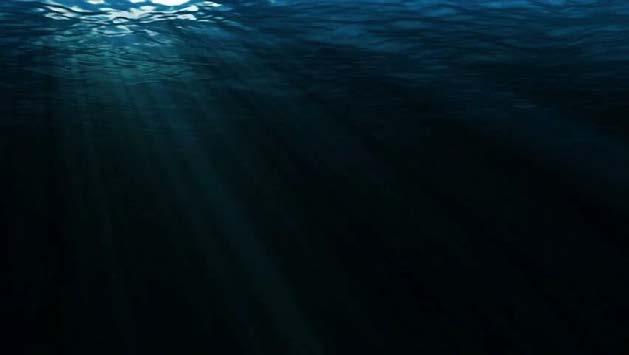
Digitalize your value chain with production ready AI.

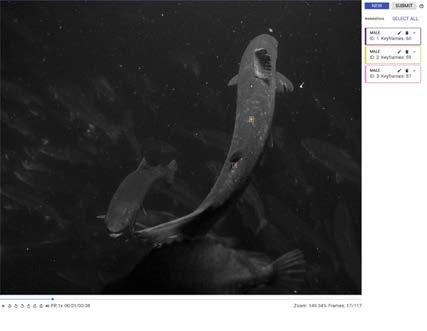

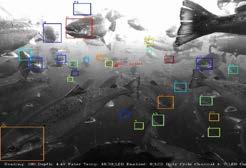

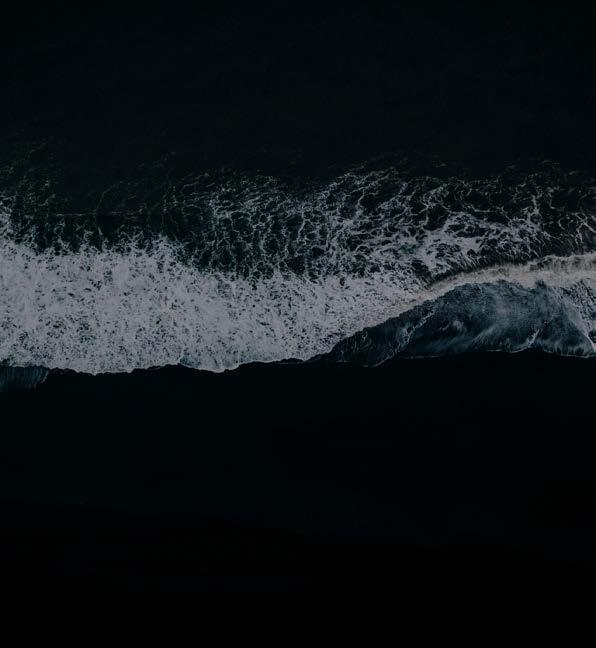
Better Data | Better Insights | Smarter Action
Increase your competitive advantage with the most advanced precision aquaculture technology available. With Artificial Intelligence developed within Alphabet’s moonshot factory (formerly Google[x]) and trained on billions of real-world observations, Tidal will help you glean the reliable insights you need to make your best decisions. Contact

us for a demo x.company/projects/tidal

fish. This seamless integration of technology ensures continuous monitoring of fish growth, welfare, and environmental factors, empowering farmers to make informed decisions in real time. The camera has sensors for depth and temperature as well, soon Aquabyte will be adding self-cleaning lenses to the feature list.. This self-cleaning aspect is extremely helpful for the farmers as the farmers don’t have to touch equipment for long time as it is submerged.
The size and position of the camera is of great advantage. As Thomas further explains, “It takes pictures in the pen without disturbing the fish and it works just right away with quite low effort.There are lights mounted on each side of the camera, and the use of these have to be monitored to avoid stressing the fish.. We can adjust how it turns on, when it turns off etc and this can be done from customer sites to make sure it works with how they do farming.”

FISH FARMING TECHNOLOGY Fish Farming Technology - April 2024 | 41

The online platform
Aquabyte’s online user portal serves as the nerve center, offering users a wealth of data visualisation and analysis tools. From biomass distribution to lice counts and welfare indicators, users can access comprehensive insights in graph form, enabling them to track trends, plan treatments, and optimize operations with unprecedented precision.
Thomas continues, “You can compare how the pens are doing,
The most advanced software solutions for feed production:
Reduce costs and prevent risks
Optimize your entire production chain
Guarantee higher quality products
BESTMIX® Feed Formulation, Quality Control, Ration Calculation and ERP solution.

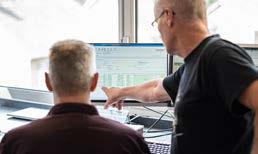
how the fish are growing. You can do this on all the products. Like for welfare, you can see how each different indicator is. You can see how much wounds the fish have, how much maturation, how much deformities you have.
You can also see images of wounds or deformities that are observed. You can yourself validate the data, if you’re a skeptic to it, or get help from fish health biologists to see how the fish is actually looking down there.
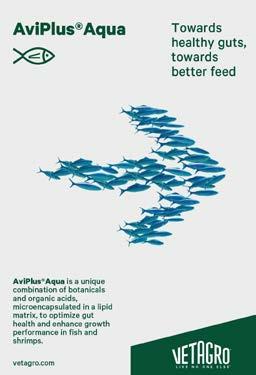
FISH FARMING TECHNOLOGY
Scan to learn more: www.bestmix.com
42 | April 2024 - Fish Farming Technology
For lice, you also get the graphs - you get the numbers of how much lice you have in each pen. You also get the images, so you can actually validate each individual lice. Some people really like to do that, especially for the first few weeks, and then they understand that the data providet by the system is accurate.”
Moreover, Aquabyte ensures the reliability and precision of its data through rigorous quality control measures. Trained biologists meticulously review images, while algorithms flag any anomalies, guaranteeing accuracy and transparency—a hallmark of Aquabyte’s commitment to excellence.
But perhaps the most compelling aspect of Aquabyte’s platform lies in its ability to drive tangible benefits for user s. By optimising fish welfare, reducing costs, and increasing revenue, Aquabyte empowers farmers to achieve sustainable growth while minimizing environmental impact.
Case studies highlight the platform’s transformative impact, from streamlining lice treatments to maximizing biomass utilization. As Thomas further clarifies, “We work closely with all types of decision makers. For example - fish health, planning, feeding, treatment planning or whatever it might be to enable data to get into the decision moments.”
“We use our data and make sure it’s integrated into how they take decisions and based on that they should just be able to make better decisions.”
Looking ahead, Aquabyte remains dedicated to continuous improvement and innovation. With ongoing developments in software and hardware, including advancements in fish behavior analysis and predictive modeling, the company is poised to redefine the future of aquaculture on a global scale.

















The genesis
Founded seven years ago, Aquabyte boasts a diverse team of experts spanning multiple continents. With headquarters in Bergen, Norway, and key operations in San Francisco and Chile, Aquabyte leverages its global reach to serve clients worldwide, driving innovation and sustainability across the aquaculture industry.
In essence, Aquabyte’s all-in-one platform represents a paradigm shift in fish farming—a fusion of cutting-edge technology, data-driven insights, and unwavering commitment to excellence. As aquaculture continues to evolve, Aquabyte stands at the forefront, shaping a brighter, more sustainable future for fish farming around the world.










































































FISH FARMING TECHNOLOGY Fish Farming Technology - April 2024 | 43
Thomas Fekete Rønningen explaining features of the camera to Costa Skotidas

REVOLUTIONISING AQUACULTURE
Aquaculture companies are developing insights and making key decisions without getting the full picture often times. Big data and AI technology provides a solution for industry leaders to obtain deep learning within the industry. International Aquafeeds Costa Skotidas recently had the privilege to meet and learn more about two companies that revolutionise modern aquaculture - let's delve into their innovative approaches.
Manolin: Aquaculture prediction software
Manolin, a company based in Norway has created a unique aquaculture prediction software with which companies can make informed decisions. International Aquafeed’s Costa Skotidas had the privilege to converse with John, a key figure behind two ground breaking platforms by Manolin, Harpoon and Researcher. As we delved into the intricacies of these innovations, John painted a vivid picture of how they are transforming the aquaculture landscape.
“At the core of our mission,” John explained, “was the
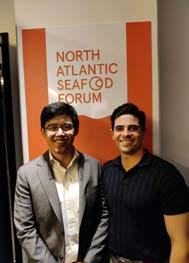
recognition of disparate data silos scattered across the industry. We saw immense potential in harnessing this data but realised that it was ensnared within non-standardised formats and structures.” This realisation ignited the inception of their ambitious project.
The journey began with the arduous task of liberating data from its silos. “We dedicated years to cleansing, normalising, and standardising the data,” John elaborated. “Every aspect, from product usage to disease records, underwent meticulous mapping to achieve a uniform, standardised framework.”
Once the data was liberated and standardised, the team embarked on a transformative journey of analysis and utilisation. “We focused on disease modeling initially,” John noted, citing pancreatic disease and infectious salmon anemia as primary targets in Norway’s aquaculture sector. These models provided actionable insights, laying the groundwork for subsequent developments.
However, John emphasised that insights alone were insufficient without actionable outcomes. Thus, Harpoon and Researcher emerged as two distinct but interrelated platforms. “Researcher facilitates seamless data sharing among farms and suppliers, fostering collaboration and informed decision-making,” John elucidated.

“On the other hand, Harpoon leverages anonymized data pools to offer benchmarks and performance insights to suppliers.”
The efficacy of these platforms is not mere conjecture; it is substantiated by tangible case studies. John highlighted success stories such as the mortality reduction achieved with Hofseth and the EPA-DHA analysis conducted with Veramaris. These studies underscored the transformative potential of datacentric approaches in aquaculture management.
Moreover, John elucidated that the true value lies not just in data analysis but in its practical application. “It’s not merely about crunching numbers; it’s about guiding real-time decisionmaking,” he asserted. Integrating predictive models with benchmarking
FISH FARMING TECHNOLOGY 44 | April 2024 - Fish Farming Technology
Tony Chen and John Constantino, Manolin
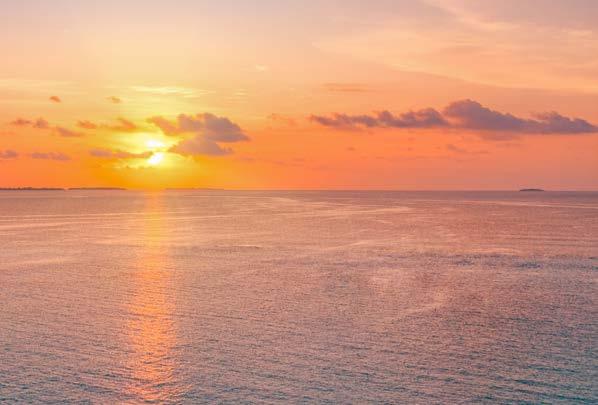
empowers stakeholders to make informed choices, thereby maximizing efficiency and productivity.
Looking ahead, John exuded optimism for the future of aquaculture. “We’ve laid the groundwork for significant innovations,” he declared. “Population tracing and predictive modeling are poised to revolutionise fish welfare and decisionmaking processes.” The vision is clear: augmenting human expertise with data-driven insights to propel the industry forward.
In conclusion, John’s insights offer a glimpse into the transformative potential of Harpoon and Researcher in revolutionising aquaculture. By bridging data divides and
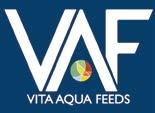


empowering stakeholders with actionable insights, these platforms epitomize the fusion of technology and sustainability driving the future of the industry. As we bid farewell to our conversation, it became evident that the journey towards a more efficient, resilient aquaculture sector had only just begun.
SeaSmart: How underwater drone technology transforms aquaculture
SeaSmart, a pioneer in underwater drone technology, has revolutionised environmental monitoring in aquaculture with its innovative approach. Unlike traditional systems burdened































FISH FARMING TECHNOLOGY THE INNOVATIVE SOLUTION TO CLEANER FISH MANAGEMENT & SEA LICE CONTROL COMPLETE, TAILORED FEED BLOCK DIETS FOR LUMPFISH & WRASSE REDUCED IMPROVED Produced in the UK by www.vitaaquafeeds.uk • SEA LICE POPULATIONS • CATARACT PREVALENCE • AGGRESSION DURING FEEDING • ENERGY CONSUMPTION
STORAGE SPACE & COSTS
MEDICAL TREATMENTS • FISH HEALTH & WELFARE • MORTALITY RATES • STABLE, CONTROLLED GROWTH • LONGEVITY & EFFICACY • PRACTICAL FEEDING METHODS • DAILY OPERATIONAL COSTS Fish Farming Technology - April 2024 | 45
•
•
by wires and fixed-depth sensors, SeaSmart’s underwater drone boasts unparalleled simplicity and data collection capabilities.
Costa Skotidas had an opportunity to converse with Andreas Morland, CEO of SeaSmart who further expained their technology, “Our underwater drone for environment monitoring is unique in two ways,” explains the founder. “The simplicity of deployment and the data it collects.”
Equipped with an array of sensors, SeaSmart’s drone maneuvers within the cage, gathering crucial data. “Combined particularly with the echo sounder and the distribution of fish in the cage, we gain a unique insight into what the fish and the biomass as a whole experience,” the founder notes.
This insight isn’t just for show. It’s practical. SeaSmart’s drone enables real-time monitoring of conditions, from appetite changes to stress levels, allowing for precise feeding schedules and proactive measures to ensure fish welfare.

How does it work? Unlike traditional systems with wires that tangle and complicate matters, SeaSmart’s drone operates wirelessly. Its ingenious design, utilizing a piston for buoyancy control, ensures efficiency and longevity. With a battery life of up to 6 months, it tirelessly collects data every hour, transmitting it via satellite for global coverage.
“It started about 15 years ago,” reminisces the founder, “when I realized the limitations of traditional measurement systems.” Thus, SeaSmart was born in 2015, with the first commercial systems hitting the market in 2017. Since then, they’ve iterated and improved, catering to the evolving needs of the aquaculture industry.
The reception? Operators love the simplicity. “Just chuck the drone in the cage,” they say. No fuss, no hassle. It’s a far cry from the days


of tangled wires and complicated setups.
And the impact? It’s tangible. SeaSmart’s data has unlocked mysteries of fish behavior, optimized growth, and enhanced production yields. From equipment tests to welfare monitoring, their contributions have reshaped the industry.
“I like to think that what SeaSmart really does is help make salmon happy,” the founder muses. And in a world where happy salmon mean a healthier industry, SeaSmart’s mission is more than just a lofty goal—it’s a necessity.

FISH FARMING TECHNOLOGY 46 | April 2024 - Fish Farming Technology
Underwater drone in opperation
Making waves with insect ingredients
Protix is the world leader in insect ingredients. Since 2009, we’ve dedicated ourselves to perfecting our insect-based solutions, empowering feed manufacturers to deliver healthy and sustainable nutrition.
Our product portfolio, featuring ProteinX® and LipidX®, is backed by science. With our industrial-scale, stateof-the-art plant in Bergen op Zoom, operational since 2019, we are in the unique position to offer a reliable supply of consistently high-quality products for your formulations.
This is our invitation to visionaries and innovators alike: connect and join the future of food today!


Explore the future of sustainable aqua feed
www.protix.eu | info@protix.eu
Advancing Gender Equity in Mediterranean and Black Sea Fisheries
by the Food and Agriculture Organization of the United Nations & the General Fisheries Commission for the Mediterranean, Italy

Women work just under a third of all fishing-related jobs in the Mediterranean and the Black Sea. These are the data revealed by Women in fisheries in the Mediterranean and Black Sea region: roles, challenges and opportunities, a new study released today by the General Fisheries Commission for the Mediterranean (GFCM) of the Food and Agriculture Organization of the United Nations (FAO), in collaboration with the FAO Fisheries and Aquaculture Division.
However persisting biases mean that these figures likely still underestimate the true contributions of women to the economies of coastal fishing communities. The publication aims to bring the issue of gender equity in fisheries to the forefront of key discussions and offer policymakers a framework from which to build. The full integration of women’s knowledge and experience into key decisions promises to improve their lives, as well as those of their families and community members.
Counting women in
Data on women’s contributions to fisheries are limited worldwide as women often perform behind-the-scenes tasks to support family fishing enterprises – for example, fixing nets, cleaning fish or bookkeeping – which can be difficult to capture in official statistics. furthermore, when statistics do cover activities along the full value chain, they are rarely reported separately by gender.
“If you don’t have evidence, you don’t know that the problem
is there. If you are not counted, you are invisible,” said a Mediterranean gender expert interviewed anonymously for this study.
Women’s voices and experience cannot be lost – they might be integrated into fisheries management to achieve the sustainability of marine ecosystems and improve the standard of living in coastal communities. “To find solutions for the problems in the sector we need men and men need women, because we have different knowledge and practices that complement each other,” stated a Black Sea fisheries policy expert.
Mixed-methods approach
The publication illuminates this data-poor subject through a mixed quantitative–qualitative approach. First-ever comprehensive estimates of women’s contributions to fisheries across the whole Mediterranean and Black Sea region are complemented by qualitative analyses based on key informant interviews conducted with people from five different countries representing a diversity of fisheries contexts in the GFCM area of application. These conversations with fishers, fisheries managers, researchers and gender experts – those individuals with the most experience and highest stake in this issue – brought forward various themes that became the basis for a set of actions recommended to the GFCM and other decision-makers in the region.
The study’s recommended actions require varying degrees of commitment from the countries and financial resources, and chief among them is the need for gender-disaggregated data collection all the way along the fisheries value chain. They represent necessary steps towards improving the working conditions of women in fisheries, as well as the overall sustainability and social and economic prosperity of fishing communities.
FISH FARMING TECHNOLOGY 48 | April 2024 - Fish Farming Technology
From exposed to protected
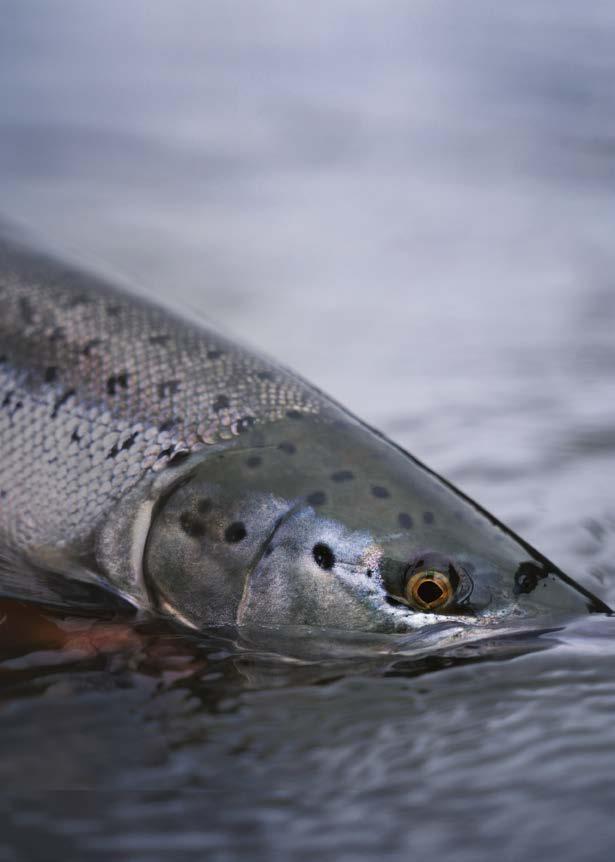
In aquaculture, fish and shrimp are constantly exposed to pathogen pressures, environmental fluctuations and other production stressors, negatively impacting survival and productivity.
At dsm-firmenich, we offer solutions to protect aquatic animals, reducing the risk of health and welfare challenges throughout the production cycle.
Learn more at dsm-firmenich.com/anh
We bring progress to life




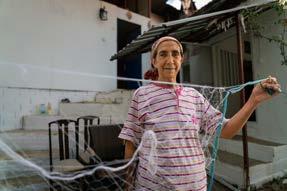
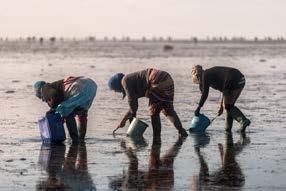

FISH FARMING TECHNOLOGY
50 | April 2024 - Fish Farming Technology
Women in the Mediterranean and Black Sea regions showing varoius careers in the aquaculture sector - sourced by GFCM & FAO
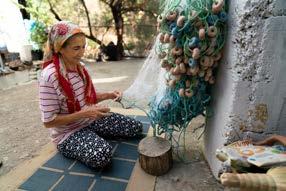

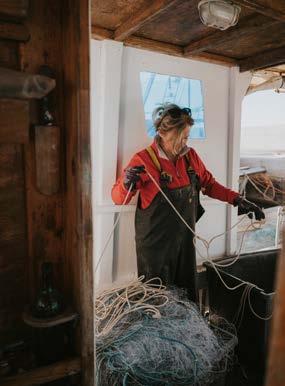


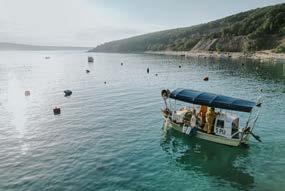
FISH FARMING TECHNOLOGY Fish Farming Technology - April 2024 | 51

If
With over 150 years of combined experience, we help you find your individual packaging solution. Over the years, we have delivered highly versatile and innovative machines operating at high production rates for the international fish food industry. In addition, we help you meet global environmental challenges without compromising on performance.












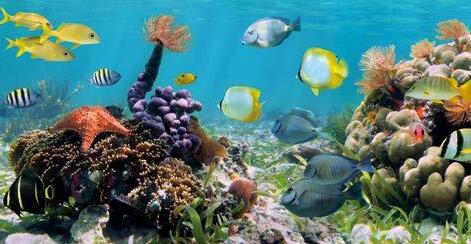



The Packaging Group GmbH · Germany · www.tpg-packaging.com
you can think
it! Let’s create your perfect fish food packaging solution!
it, we can pack
By the numbers
Up-to-date employment figures are broken down by gender according to GFCM subregion and value chain stage, and they reveal that women’s jobs in Mediterranean and Black Sea fisheries are overwhelmingly concentrated in the post-harvest stage (which includes work to repair nets and clean boats, sort and clean the catch, and process and market fish).
Women account for 38 percent of regional employment in the post-harvest stage, compared to 16 percent and 10 percent in the pre-harvest and harvest sector stages, respectively. Women’s employment is greater in the industrial fishing segment than in small-scale fisheries, though this figure likely underestimates women’s employment in the small-scale sector, especially in nonvessel-based jobs, given the lack of systematised data collection on this type of employment.
The role of the GFCM
The GFCM is pursuing efforts to address biases against women in Mediterranean and Black Sea fisheries, including by supporting the creation and recognition of women’s organisations and facilitating women’s access to equipment and social protection programmes.
The publication showcases the potential of another recommended action: promoting gender-sensitive projects and trainings by identifying key female stakeholders for participation in meetings and courses and creating an environment where women are encouraged to engage and express themselves. To select interviewees for the study, the authors relied on a network of cooperatives, research institutes, government administrations and other organisations that the GFCM has built up over years of committed action, including by contacting fishers and fisher organisations that had previously engaged with the GFCM in events such as sessions of the Small-Scale Fishers’ Forum.
“It is taking time for the people, our families, to understand the nature of our work and the risks and difficulties we face. Awareness needs to be raised. We are very passionate about our work, we are interested in continuing to progress and achieve stability, and in our right to exist in the sector,” concluded a Mediterranean female fisher interviewed in the study.
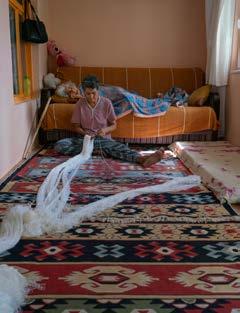



International Aquafeed - April 2024 | 53
TECHNOLOGY SHOWCASE
WAYFINDER BY SOFAR
Wayfinder evaluates millions of routes each day and alerts Captains and Operators in-app and via email when there is a more optimal path to port that takes advantage of favorable forecasts and offers significant savings opportunities. Wayfinder also sends Captains a daily RPM recommendation; in changing conditions, variable guidance always outperforms constant power strategies.
Wayfinder’s continuous route and RPM recommendations are informed by the real-time weather data collected by Sofar’s global network of Spotter buoys. Direct observations of weather along a vessel’s route help produce more accurate forecasts and more reliable guidance. Voyage guidance informed by imprecise speed and fuel consumption predictions cannot be optimal. Wayfinder’s vessel performance model generates high-accuracy speed and fuel predictions for every optimized suggestion and monitors accuracy to ensure that the guidance issued delivers expected results.
www.sofarocean.com
ElECTRIC STUNNER™ BY Op TIMAR
Optimar’s electric stunning system is the most humane way to sedate all types of aquatic species. Scientifically verified and in compliance with European and Norwegian standards, the Electric Stunner renders fish unconscious safely and in a stress-free manner. In use and validated for more than 15 years on vessels and in onshore processing facilities, the Electric Stunner has been used on Salmon (farmed and wild), Trout, Cod, Sea Bass/Bream, Catfish, Crab, Lobster, Eel, and more.
Benefits of stress-free stunning:
Can be used on aquatic species.
Large handling capacity.
Can be used with different types of killing options.
Minimizes stress in the fish.
Minimal maintenance.
https://optimar.no/solutions/product/electro-stunner
http://myaqua.info/eBff


NERORAS BY AlpHA AQUA
The NeroRAS is Alpha Aqua A/S’s RAS solution for low height tank halls and specific shallow raceway solutions. As with all of Alpha RAS products, it can perform in “solo” or in clustered systems. All parts of the NeroRAS have easy access and can be serviced with minimal disruption of the operation. Auxiliary equipment (skimmer, ozone etc) can be added upon demand.
All NeroRAS™ units are equipped with:
Drumfilter, 40 microns with backwash pump
Moving bed biofilter in 2 chambers with a third one acting as microparticle filter
Gas balancing filter
UV filter
Lift pump
Extractor for CO2
Sensor package for regular operation
Sludge pump

FISH FARMING TECHNOLOGY
54 | April 2024 - Fish Farming Technology

Cleaner fish vaccination
Safeguarding the Ballan wrasse from bacterial disease
With bacterial diseases posing a significant threat to their wellbeing, efforts to optimise vaccine formulations and delivery methods have gained momentum.
Research into the optimal formulation and delivery of vaccines to safeguard ballon wrasse from bacterial disease has been given a funding boost following a successful first phase, in a project which could expand the use of the cleaner fish to control sea lice on salmon farms.
A consortium of UK academics and aquaculture partners is exploring the best possible conditions for delivering vaccines against Aeromonas salmonicida, a bacterium which can cause potentially fatal outbreaks of disease in ballan wrasse and impact their ability to treat sea lice.
In the intricate ecosystem of aquaculture, the delicate balance between fish health and pest management has long been a focal point for researchers and industry stakeholders alike. Among the many challenges faced, the quest for effective disease prevention measures stands as a cornerstone of sustainable aquaculture practices. In this pursuit, the ballan wrasse, a species revered for its role as a natural predator of sea lice, emerges as a pivotal player in maintaining the health of salmon farms.
Led by the University of Stirling’s Institute of Aquaculture and Otter Ferry Selfish, with support from Mowi and Ceva Ridgeway Biologicals, the team has received almost £40,000 from the Sustainable Aquaculture Innovation Centre (SAIC) to take its research to the next stage.
Outcomes from the initial phase indicated that while the vaccine – designed for delivery at the hatchery stage –elicits the expected immune response to the bacterium, the antibodies produced varied depending on the strains in the vaccine.
Results also suggested that the vaccine stimulates an adaptive immune response, which enables the cleaner fish to recognise the characteristics of the bacteria and react fast if

Aquaculture case study
CS 56 | April 2024 - International Aquafeed
they encounter it again, preventing future infections.
The next phase of the project aims to ensure the vaccine formulation provides protection against the main circulating strains, which can change over time, much like a seasonal human flu. It will also examine the function of the antibodies in a laboratory setting to see how they improve the strength of protection against the disease.
The research team previously determined the optimal timing and method for administering the vaccine, which involves immersion followed by a booster. injection before the ballan wrasse are deployed to the salmon farms.
Dr Andrew Desbois from the Institute of Aquaculture at the University of Stirling, said: “More so than ever, we are tuned into the power of vaccines in enhancing disease prevention, and the results of the first stage of this project have taken us one step closer to safeguarding ballan wrasse against Aeromonas salmonicida. The next phase of the project involves exploring the functionality of the antibodies produced. We can then apply these findings and collaborate with vaccine manufacturers to help refine the formulation and provide better protection.”
Heather Jones, CEO at SAIC, said: “Fish health and welfare is an ongoing focus for the sector, so we are pleased to extend our commitment to this collaborative project and help the valuable research to progress. Formulating a vaccine that enhances wrasse health protection will ultimately support the use of this sustainable sea lice treatment which could unlock further economic growth for the wider aquaculture sector.”
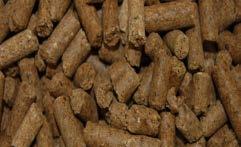
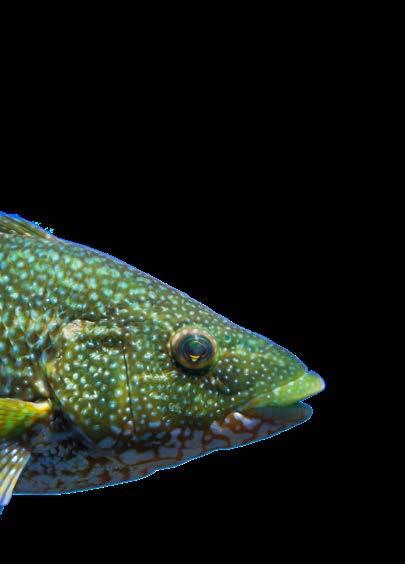



Made in Britain, Trusted Worldwide. We are We can help you improve your pellet durability testing... Holmen NHP200 Series 2 Laboratory based, automatic pellet tester. Holmen NHP300 Inline, process based system. OLM N H ® Holmen NHP100 Portable, manual pellet tester.
Industry Events
2024
2024
April
23-25
The Global Seafood Marketplace
Barcelona, Spain
www.seafoodexpo.com
2024 May
6-8
HavExpo 2024
Bergen, Norway
www.havexpo.no/en/

8-11
International Indonesia Seafood & Meat Expo
Jakarta, Indonesia
https://iism-expo.com/
8-11
Indonesia Cold Chain Expo
Jakarta, Indonesia
https://iism-expo.com
14-15
Aquaculture UK
Aviemore, Scotland
https://aquacultureuk.com
15-17
Seafood Expo
Eurasia - May, İstanbul, Türkiye
https://seafoodexpoeurasia.com
21-22
Blue Food Innovation Summit
London, England
www.bluefoodinnovation.com


2024
27-31
International Symposium on Fish Nutrition and Feeding (ISFNF)
Puerto Vallarta, Mexico
www.isfnf2024.com
June
18-20
Seagriculture EU 2024
Torshavn, Faroe Island
https://seagriculture.eu
19-21
Aquaculture Taiwan 2024
Taipei, Taiwan
www.aquaculturetaiwan.com


24-26
4th Edition of World Aquaculture and Fisheries Conference
Paris, France
www.worldaquacultureconference.com
28-29
Aquaculture Congress 2024
Athens, Greece
https://aquaculture-congress.com

2024

July
2-5
Asia-pacific Aquaculture 2024
Surabaya, Indonesia
www.was.org/meeting/code/APA2024
17-19
IndoFisheries 2024 Expo & Forum
Jakarta, Indonesia
https://indofisheries.id
2024
September
21-22
AquaH
Birmingham, United Kingdom
https://aquah.co.uk
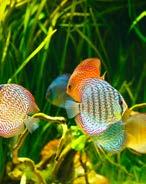
AQUAH was born from the need for a much-deserved event for the ever-expanding and passionate UK aquatics and reptile community. Enthusiasts will have access to a diverse range of exotic reptiles, amphibians and invertebrates, along with freshwater plants and fish, Japanese Koi, marine fish and quality imported and aqua cultured corals 'home grown' by vendors across the country. With the rare opportunity to socialise with like-minded hobbyists, this is truly an event you do not want to miss!

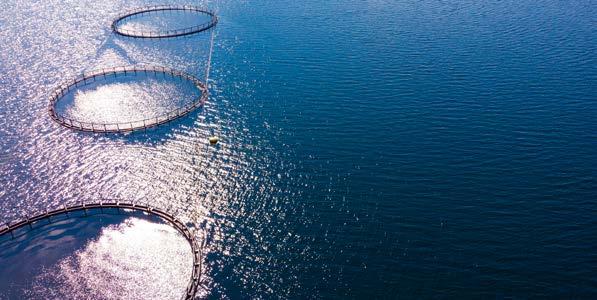
DIRECTORY & BUYERS GUIDE THE WOR lD'S lEADING DIRECTORY FOR AQUACUlTURE GET YOUR FREE lISTING! https://myaqua.info/iafd 58 | April 2024 - International Aquafeed











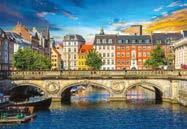







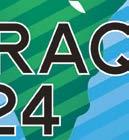

2024
Defining a Resilient Future 28-29 June 2024
Megaron Athens International Conference Centre


www.aquaculture-congress.com
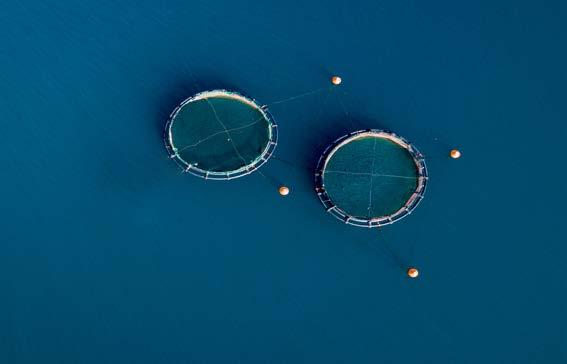
Building on the success of our previous two Congresses in 2018 and 2022, the Aquaculture Congress has emerged as a cornerstone institution in the industry. The primary goal of the 2024 event is to guide the definition of a resilient future for aquaculture in Greece, the Mediterranean, Arab countries, and beyond.
The Aquaculture Congress 2024 “Defining a Resilient Future”, is organized by AMBIO S.A. (https://ambio.gr) with the support of Hellenic Organization of Aquaculture Producers - HAPO (https://fishfromgreece.com), will take place on 28-29 June 2024, at the Athens International Conference Centre.
info@ambio.gr
Τ. +30 210 9219 948
Key objectives include addressing investment challenges, promoting sustainable practices to mitigate the effects of climate change, strengthening competitiveness, encouraging innovation through advanced technologies, developing new products, investigating global demand projections for aquaculture products, and fostering international cooperation and partnerships. With an expected participation of 750 delegates from Cyprus, the Arab countries, Tunisia, Egypt, Norway, Denmark, Italy, Germany, France, Spain, Israel, Belgium and Portugal, the congress aims to attract key industry stakeholders, ensuring a collaborative and impactful event.




















Registrations are free on aquaculture-congress.com (first come first served basis) Interested companies are invited to contact us at paspaliari@ambio.gr - kourakou@ambio.com.gr or by phone at +30
210 9219 948


 Organized by With the support of
Organized by With the support of













50,000m2 Exhibition Area 500+ Exhibitors 30000+ Visitors 200+ Delegations 20+ Conferences 210+ Media & Partners International Trade Show from Feed to Food We are recruiting Exhibitors Hosted Buyers! Ask us to apply Now! www.VIVchina.nl www.VIVworldwide.cn Welcome to China!
Ms.Haidee
Mob: +86
C M Y CM MY CY CMY K VIV24 媒体广告190x132mm.pdf 1 2024/3/18 17:38:09 Organized by MOST COMPLETE TRADE SHOW FOR LIVESTOCK PROFESSIONALS IN SUB SAHARAN AFRICA VIV AFRICA 2024 KIGALI, RWANDA 2-3 OCTOBER WWW.VIVAFRICA.NL PAVILION DAIRY PAVILION FEATURING
Mr. Philippe Verstuyft(based in Europe) Tel: +31 6 1517 3564 philippe.verstuyft@vnuexhibitions.com
Wang
138 1775 2961 haidee.wang@globusevents.com
Aquaculture America
New plans close to being adopted to boost US aquaculture
by David Harvey, Journalist, International Aquafeed, UK
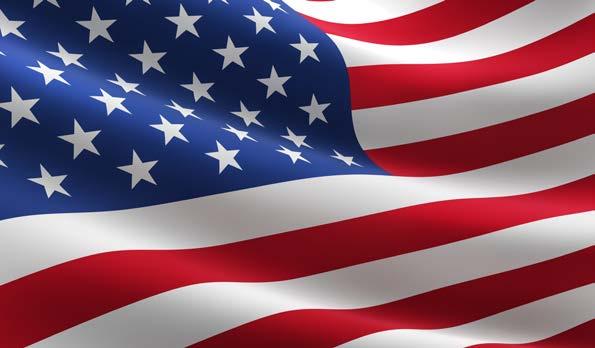
This year’s Aquaculture America has set the bar for attendance at its highest level to date.
While the first day of the event, Sunday, focused on registration and exhibitors setting up ready for the full trade show beginning on the Monday, February 19, 2024, there was one workshop on the day that focused on discussion around the technical skills and applications using R and RStudio software.
The conference days proper saw over 500 talks and presentations made by both industry experts and students, covering a comprehensive range of topics surrounding and affecting the industry.
The event itself - from Monday-through-Wednesday - had its floor area filled to capacity, both with familiar and new companies exhibiting, showing off some of the latest and greatest advancements in our industry today.
New plans for US aquaculture
A conference session that attracted much attention was one devoted to explaining the Strategic Plan for Aquacultural Economic Development and its related Overview of the National Aquaculture Development Plan, foundation documents and agreements for the US aquaculture industry going forward.
Not since the last national policy on aquaculture - the National Aquaculture Act of 1980 - has there been such diverse yet targeted goals and strategies laid out for the country’s aquaculture industry.
The two plans had been released for public comment and were announced as ‘breaking news’ to delegates attending this year’s Aquaculture America 2024 event in San Antonio, Texas from February 18-12, 2024.
Delegates attending the briefing that discussed ‘Federal Support for the Expansion of US Aquaculture’ were directed to the Subcommittee’s website on Aquaculture at: https://www.ars.usda. gov/SCA/ where comments were being called for before Friday April 5, 2024.
Participating agencies in the compilation of the proposed US aquaculture plans include the:
• Department of Commerce: NOAA Fisheries, NOAA Sea Grant, Minority Business Development Administration, Economic Development Administration
• Department of Agriculture: Economic Research Service, Rural Development, Agricultural Marketing Service, National Institute of Food and Agriculture
• Department of the Interior: US Fish & Wildlife Service
• Small Business Administration
• Food and Drug Administration
• Environmental Protection Agency
• Department of State
The US is finalising a National Agriculture Development Plan which comprises an Overview highlighting the policy context and its three separate areas of activity, namely: 1) a Regulatory Efficiency Plan; a Science Coordination Plan and an Economic Development Plan, all of which are in final format except for the latter which was still in draft form at the time of going to press.
The overall plan is to create “a robust, resilient, globally-competitive and environmentally sustainable domestic aquaculture sector.”
The gathered delegates heard in outline the actions federal agencies can take within existing budgets, how it existing programmes can be expanded in their effectiveness and to how to accommodate more robust inputs from stakeholders and technical experts while at the same time encouraging engagement between public-private collaborations.
There are four key goals which will aim to: Encourage industry investment; support infrastructure and workforce development; expand market opportunities for US aquaculture products and support aquaculture engagement, communications and literacy.
Strategies to be undertaken involve place-based clusters and a focus on underserved communities such as tribes and veterans where appropriate.
Industry Events
62 | April 2024 - International Aquafeed
Industry Events
Goals
Goal 1: Encouraging industry investment has objectives of:
• Enhanced regulatory efficiency
• Increased access to capital
• Increased incentives associated with enhancing natural capital
• Increased access to Federal Risk Management Services
• Improved economic and social impact data and analyses
Goal 2: Supporting infrastructure and workforce development has objectives of:
• Educating and training a skilled and diverse aquaculture workforce
• Developing and encouraging the adoption of new technologies
• Increasing investment in physical infrastructure
• Establishing test beds, R&D consortiums and pilots
Goal 3: Expand market opportunities through the objectives of:
• Evaluating technical and economic potential of new and emerging species
• Supporting new product development
• Expanding domestic market opportunities
• Promoting global competitiveness of US seafood products
The opening address at Aquaculture America 2024 in San Antonio, featured Tribal Council Vice-Chair Loni Greninger, of the native Jamestown S’Klallam Tribe from Blyn, Washington, which is located just outside Seattle and across the estuary from Victoria in the USA and is one of many independent tribes within the region.
She quoted to those attending the opening the words of the late councilman Kurt Grinnell, who had said: “We are a sovereign nation, and we look out seven generations.” She also quoted her Chairman/CEO W. Ron Allen who believes, “We must co-exist respectfully and responsibly” with nature.
While the Jamestown S’Klallam Tribe’s Mission is to seek to be self-sufficient and to provide governmental programs and services that meet the needs of their people, Loni Greninger says the ‘western’ definition of aquaculture does not reflect the importance of nature. This definition focuses on the breeding, rearing and harvesting of fish, shellfish, algae and other organisms in all types of water environments. However, the indigenous definition of aquaculture is the manipulation of the land and seas (our brothers and sisters, she added), as the Creator taught us.
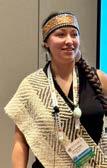

“We steward the land and seas and they will provide for us,” she says.



















The print edition the trusted information source for the industry NEW EDITION - OUT NOW! 2024 www.ge-pro.de Animal proteins and fats as sustainable feed materials For more information, visit us online: www.internationalmilling.com International Aquafeed - April 2024 | 63

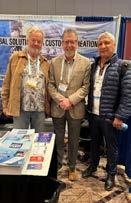


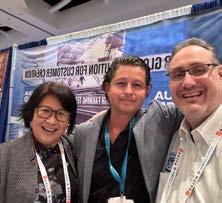
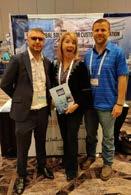
• Exploring the expansion of aquaculture purchased by government’s Commodity Purchase Programs
Goal 4: Increasing aquaculture engagement, communications and literacy tmhrough the objectives of:
• Increasing aquaculture literacy and engagement
• Increasing community engagement in aquacultural matters
The group heard that examples of actions, under the plan might include:
• NOAA and USDA (NIFA, NASS, ERS, RMA) collaborating with the Bureau of Labour Statistics to develop a producer price index for the aquaculture sector and/or
• NOAA, USDA NIFA and EDA to support and encourage the


development, maintenance, modernisation and expansion of aquaculture infrastructure such as hatcheries and port facilities as well as requisite job training programs
Good reasons to attend
The overall event ended up having an attendance of more than 2100 individuals, including 210 students, coming together from 61 different countries. There were over 140 booths at this year’s show and 77 different breakout conference sessions, which confirms it as the biggest Aquaculture America to date, a figure that the organisers will no doubt hope to beat again next year.
International Aquafeed was fortunate to be in attendance, with
Paula Bowers and Brandon Bowers, local fish farmers
David Calitri from CALITRI TECHNOLOGY showing off their newest fish counter Tuti Tan and Darren Parris with Kurt Servin from Jefo Osvaldo Muñoz and Dana Nelson from Extru-Tech
Miguel Angel Arostegui Ignacio, Antonio Garza de Yta, Luis Felipe Diaz Cortes and Santiago Villanueva from FishFarmFeeder
Johan Perslow from Grand Shrimp and Jorge K. Tamayo of Best-Aqua
Roger D Gilbert and Tuti Tan with John Cooksey, Executive Director, from the World Aquaculture Society ahead of Aquaculture America
64 | April 2024 - International Aquafeed
Costa Skotidas got the pleasure of meeting Debra Ray and Bill Amadio from Sightline Systems who specialise in software for the aquaculture industry to help companies maximise their efficiency.

ISTANBUL, MAY 1517, 2024 90 216 922 02 13, 84 236 445 81 04 | INFOSEAFOODEXPOEURASIA.COM SEAFOODEXPOEURASIA.COM NEW
Industry Events
publisher Roger Gilbert, events manager Ms Tuti Tan, group president Darren Parris and content development manager Costa Skotidas for the full four-days. Our team got the chance to meet various companies, some of which we have had the pleasure of meeting and working with previously and some which were new to us.
The event also proved to be a one that brought together those from all the different areas of the industry, both big and small, with our team getting to meet our supporters along with other companies we have the pleasure to be working with. We met with many readers, such as those from
the Australia-Oyster Farm, who were kind enough to stop by our booth.
This inclusivity of all involved in aquaculture, no matter size or activity is one thing that we believe makes Aquaculture America one of the top industry events there is.
So far nothing has been officially announced for the next edition, however it is almost for certain that with the success of this year’s event behind it, the next Aquaculture America will return with a bigger and better turnout than this year - and International Aquafeed will be in attendance. We look forward to seeing you all there.


66 | April 2024 - Fish Farming Technology
Fish
International 2024
by Jyothsna Nelloolichalil & Costa Skotidas, International Aquafeed, UK
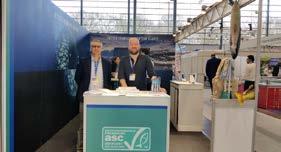
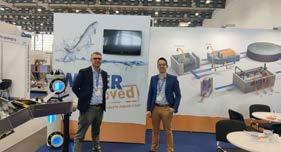
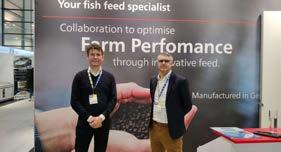
Fish International, Germany’s only fish trade fair, was successfully held from 25-27 February at the Bremen Fair & ÖVB-Arena with a record attendance. This event along with Gastro Ivent, which took place at the same time as the fish trade fair, attracted a total of 13,729 visitors who came to find out about the latest trends and topics.
At Germany’s only fish trade fair, 322 exhibitors from 30 countries (2022: 321) presented their innovative products and services. Among them were major players in the industry such as Transgourmet Seafood from Bremerhaven. “This was the best fish international, “says Ralf Forner, Managing Director of Transgourmet Seafood.
“Our stand was well attended and full, the halls were packed, and the discussions were great. We are very satisfied all round.” Martina Buck, Communications Manager at Deutsche See, also summarises the event positively, “It was very busy, we had a lot to do and had some great and innovative discussions. Our bottom line: interest in fish remains high!”
Together with Gastro Ivent, the trade fair organisers from Bremen 2024 put the topic of human resources on the agenda for the first time. The focus was on the question of how to find, attract and retain people in a rapidly changing industry and society. To this end, the trade fair duo spent two full days of the programme focusing on the pressing issues of the world of work.
Networking at the event
International Aquafeed was fortunate to meet with many industry leaders at the event who shared their insights with us. Brand Manager at Aqua Manager
Discussing the new feed standard with Tobias Haug, Market Development manager, ASC
Ronal Faber, Ceo of Alltech Coppens with Costa Skotidas of International Aquafeed. We also had a chance to Feature Ronal in the interview pages for this edition.
Industry
68 | April 2024 - International Aquafeed
David Märkl-Bilger, Ceo of WaterProved with Costa. WaterProved mainly work with RAS, one of the major things they do is modernisation of flow through farms, for saving water, saving energy.
Events
commented, “we are here as newcomers, and we’re always happy to be here. We can expand our reach by meeting amazing new people, as well.”
“We reconnected with some existing clients, which is really important. And we’ve had a chance to meet a wide variety of companies and producers which was a diverse and unique experience.”
Xavier Broise from Aqua Labo said, “we want to find new customers from fish farming industry in the Germany and more generally from the German speaking areas. For us, it is very interesting to understand the unique technologies and aquaculture way of working in each country.”
Valeska Weymann, senior technical expert from Global G.A.P commented, “This fair has grown so much for the last eight years. It was a very small and purely German, but now it’s growing internationally. And I think that this is one of the most important events for us when it comes to aquaculture products.”
The exhibiting companies showcased some of their best products as well. Carolin Ackermann from SeaWater Cubes explained, “we manufacture small scale standardised systems for farming sea fish on land, and we are convinced that fish should be cultivated and consumed at the same place again, that’s
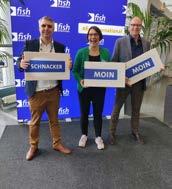

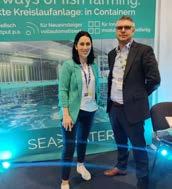

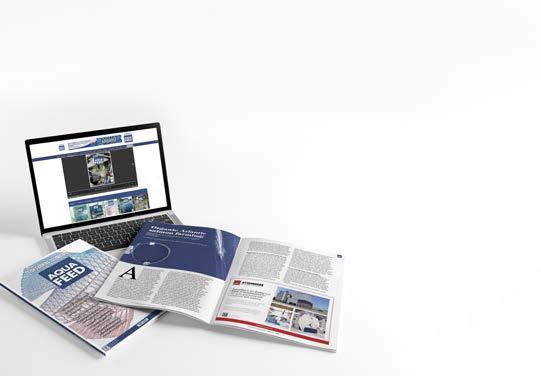
 Sabine Wedell and Kai Watjen, organisers of Fish International with Costa Skotidas
Petra Weigl and Remco De Waard of Regal Spring Europe with Costa Skotidas.
Chloe Krannidiotis and Eleftheria Bikon of Aqua manager. Aqua Manager offers and develops advanced aquaculture software solutions.
Sabine Wedell and Kai Watjen, organisers of Fish International with Costa Skotidas
Petra Weigl and Remco De Waard of Regal Spring Europe with Costa Skotidas.
Chloe Krannidiotis and Eleftheria Bikon of Aqua manager. Aqua Manager offers and develops advanced aquaculture software solutions.
Industry Events CATCH UP WITH OUR BACK ISSUES Claim a 12 month digital subscription FREE of charge, and gain access to our archive on mobile or desktop computer Simply visit: www.aquafeed.co.uk/subscription and set up an account using promo code: ATl ANTA24 Then download our app from your favourite app store and log in! International Aquafeed - April 2024 | 69
Carolin Akermann of Seawater Cubes. Seawater cubes is start up that focused on manufacturing small scale standardised systems for farming sea fish on land
Industry Events
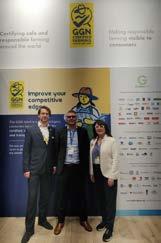
why we have a regional approach.”

“Our technology is housed in shipping containers and it has a production quantity of eight tonnes of fish per year, for example, sea bass and sea bream”
David Märkl-Bilger, CEO of WaterProved explained their technology as, “we design and build fish farms, mainly for freshwater species - also for shrimp, mostly white leg shrimp. We mainly work with RAS, one of the major things that we do is modernisation of flow through farms, for saving water, saving energy, and making the most out of them. Our ethos is tailor
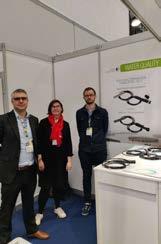
made Aquaculture. This means we really focus on the demands and problems of our customers and trying to solve them as best as possible.”
As a showcase for new products, the 19th edition of the fish trade fair had a lot to offer. Over 300 exhibitors from Germany and abroad attended and showcased their tried-and-tested, innovative and new products.
The next date of the fish international trade fair together with Gastro Ivent has already been set Sunday to Tuesday, 8 to 10 February 2026.

Upgrade your operations with ANDRITZ Feed & Biofuel’s advanced, risk-free automation and digitalization integration.
Leveraging our 25 years of cross-sector success, our platform blends human and digital intelligence to enhance processing efficiency and support growth, while delivering 7%-16% throughput increases. Our solution encompasses an evolving, vendor-neutral solution supported by state-of-the-art automation and digitalization technology.
Send us a request to get a personal consultation: fb-automation@andritz.com FEED
ANDRITZ WILL BE WITH YOU EVERY STEP OF THE WAY IN YOUR DIGITALIZATION JOURNEY, ENSURING YOUR PLANT AND YOUR BUSINESS NEVER STAND STILL.
ANDRITZ FEED & BIOFUEL andritz.com/feed-and-biofuel-en
Remko Oosterveld and Valeska Weymann, FoodPlus Gmbh with Costa Skotidas
International Aquafeed’s Costa Skotidas with Aquasyster. Aquasyster is a company that specialises on manufacturing automatic fish feeders.
Agnes Broise and Xavier Broise of Aqualabo Group with Costa Skotidas
& BIOFUEL AUTOMATION & DIGITALIZATION NEVER STAND STILL
70 | April 2024 - International Aquafeed


MORE INFORMATION nickmouthaan@victam.com +31 6 2126 4398 victaminternational.com PRE BOOKING RATE : until October 31st, 2024 * EARLY BIRD RATE : until October 31st, 2025 * SEE YOU IN 2026 * Sales starts in March 2024 and as the event takes place in different halls, the stand allocation is done on a first come first serve basis JUNE 2-4, 2026 JAARBEURS, UTRECHT, THE NETHERLANDS JOIN OUR 60TH ANNIVERSARY 190 x 132 Perendale Int2026.indd 1 25-03-2024 10:48 BOOK YOUR STAND BEFORE APRIL 1, 2024 AND TAKE ADVANTAGE OF THE EARLY BIRD SALES DISCOUNT . CONNECTING ALL AMERICAN CONTINENTS BRAZIL São Paulo JOIN US in 2025 FEED INGREDIENTS LATIN AMERICA 2025 FEED INGREDIENTS LATIN AMERICA 2025 SEPTEMBER 16-18, 2025 EXPO CENTER NORTE, WHITE PAVILION, SÃO PAULO, BRAZIL victamlatam.com 190 x 132 Perendale.indd 1 25-03-2024 11:15 International Aquafeed - April 2024 | 71
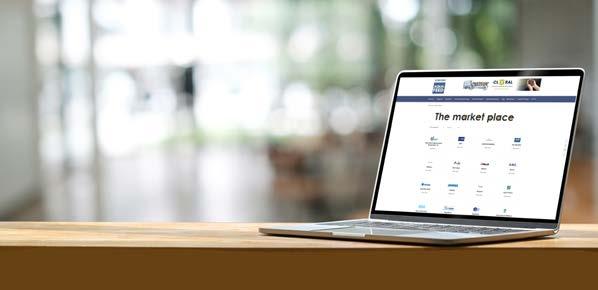
www.aquafeed.co.uk/the-market-place
Welcome to the market place, where you will find suppliers of products and services to the industry - with help from our friends at The International Aquafeed Directory.






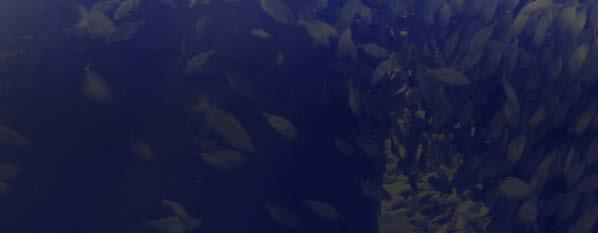

+ 33
www.faivre.fr PROFILE:
Air products
+49
www.kaeser.com PROFILE:
Additives
+43
www.dsm.com PROFILE:
+1 450
https://jefo.ca
Liptosa +34
www.liptosa.com PROFILE:
PAYPER +34
www.payper.com PROFILE:
Bulk storage
+31
Bühler AG +41 71 955 11 11 www.buhlergroup.com PROFILE: myaqua.info/qREy FAMSUN +86 514 85828888 www.famsungroup.com PROFILE: myaqua.info/Esjj Wenger Manufacturing +1 785-284-2133 www.wenger.com PROFILE: myaqua.info/plVJ Dosing PAYPER +34 937 216 040 www.payper.com PROFILE: myaqua.info/payper Drum filters Faivre + 33 3 81 84 01 32 www.faivre.fr PROFILE: myaqua.info/JEzZ Elevator buckets Tapco Inc +1 314 739 9191 www.tapcoinc.com PROFILE: myaqua.info/rCyw Elevator & conveyor components 4B Braime +44 113 246 1800 www.go4b.com PROFILE: myaqua.info/vPJh Enzymes DSM-Firmenich +43 2782 8030 www.dsm.com PROFILE: myaqua.info/uJDB Equipment for sale ExtruTech Inc +1 785 284 2153 www.extru-techinc.com PROFILE: myaqua.info/DhbW Extruders Almex +31 575 572666
myaqua.info/zjHK
AG +41 71 955 11 11
myaqua.info/qREy Ottevanger +31 79 593 22 21
72 | April 2024 - International Aquafeed
Aerators Faivre
3 81 84 01 32
myaqua.info/JEzZ
Kaeser Kompressoren
9561 6400
myaqua.info/okuN
DSM-Firmenich
2782 8030
myaqua.info/uJDB Jefo
799 2000
PROFILE: myaqua.info/mQBf
902 157711
myaqua.info/iZqf Bagging
937 216 040
myaqua.info/payper
TSC Silos
543 473979 www.tsc-silos.com PROFILE: myaqua.info/YZlV Conveyors Vigan Enginnering +32 67 89 50 41 www.vigan.com PROFILE: myaqua.info/aXKo Computer software Inteqnion +31 543 49 44 66 www.inteqnion.com PROFILE: myaqua.info/mSNu Coolers & driers
www.almex.nl PROFILE:
Buhler
www.buhlergroup.com PROFILE:
www.ottevanger.com PROFILE: myaqua.info/prYd
the market place


Wenger Manufacturing
+1 785-284-2133
www.wenger.com
PROFILE: myaqua.info/plVJ
Zheng Chang
+86 2164184200
www.zhengchang.com
PROFILE: myaqua.info/zQxZ
Feed and ingredients
Adisseo
+33 1 46 747104
www.adisseo.com
PROFILE: myaqua.info/iGee
Aller Aqua

+45 70 22 19 10
www.aller-aqua.com
PROFILE: myaqua.info/AnqC
Aller Aqua produces fish feed for freshwater and saltwater aquaculture. That is a brief presentation, but it doesn’t even come close to covering the entire story.
Aller Aqua is a family-owned company. They have produced fish feed for more than 50 years, and this makes them one of the world’s most experienced fish feed producers, delivering some of the best products on the market, to their customers.
Today Aller Aqua has factories in Denmark, Poland, Germany, Egypt, China, Zambia, and Serbia, and they export their products to more than 60 countries worldwide.
Aller Aqua has a broad and professional product range, consisting of feed for 30 species of fish. They know the importance the right feed plays in their customer’s production, and therefore their own professional development- and research center in Germany, Aller Aqua Research, consistently works on optimising, developing and documenting the effect of our products. This ensures that their customers receive top-quality professional products, at competitive prices – delivered on time. myaqua.info/AnqC

Alltech
+44 1780 764512
www.alltechcoppens.com
PROFILE: myaqua.info/mTpk
GePro
+49 54415 925252
www.ge-pro.de
PROFILE: myaqua.info/UzqV
Jefo
+1 450 799 2000
https://jefo.ca
PROFILE: myaqua.info/mQBf
Liptosa
+34 902 15 77 11
www.liptoaqua.com
PROFILE: myaqua.info/iZqf
miXscience
+33 2 23 46 90 00
www.mixscience.eu
PROFILE:myaqua.info/mixscience
Phileo (Lesaffre animal care)
+33 3 20 81 61 00
www.lesaffre.fr
PROFILE: myaqua.info/vqCK
Tietjen Verfahrenstechnik GmbH
+49 4106 6333 0
www.tietjen-original.com
PROFILE: myaqua.info/wiyw
Van Aarsen International

+31 475 579 444
www.aarsen.com
PROFILE: myaqua.info/sBGT
Fish counters
Faivre
+ 33 3 81 84 01 32
www.faivre.fr
PROFILE: myaqua.info/JEzZ
Fish Graders
Faivre
+ 33 3 81 84 01 32
www.faivre.fr
PROFILE: myaqua.info/JEzZ

Pulverisers

Probiotics
Fish pumps
FAMSUN
+86 514 87848880
www.muyang.com
PROFILE: myaqua.info/Esjj
Ottevanger
+31 79 593 22 21
www.ottevanger.com
PROFILE: myaqua.info/prYd
Zheng Chang
+86 2164184200
www.zhengchang.com
PROFILE: myaqua.info/zQxZ
IDAH
+866 39 902701
www.idah.com
PROFILE: myaqua.info/eCVS
DSM-Firmenich
Hammermills
Faivre
+ 33 3 81 84 01 32
www.faivre.fr
PROFILE: myaqua.info/JEzZ
Dinnissen BV
+31 77 467 3555
www.dinnissen.nl
PROFILE: myaqua.info/loTI
Tietjen Verfahrenstechnik GmbH
+49 4106 6333 0
www.tietjen-original.com
PROFILE: myaqua.info/wiyw
Moisture analysers
Hydronix

Packaging
+44 1483 468900
www.hydronix.com
PROFILE: myaqua.info/FkMu
FAWEMA / The Packaging Group
+49 22 63 716 0
www.fawema.com
PROFILE: myaqua.info/oeDC
Palatability enhancers
Symrise
https://aquafeed.symrise.com
PROFILE: myaqua.info/fEOD
Palletising
PAYPER
+34 937 216 040
www.payper.com
PROFILE: myaqua.info/payper
Pellet mill


Plants
IDAH
+866 39 902701
www.idah.com
PROFILE: myaqua.info/eCVS
PTN
+31 73 54 984 72
www.ptn.nl
PROFILE: myaqua.info/Zapi
Buhler AG
+41 71 955 11 11
www.buhlergroup.com
PROFILE: myaqua.info/qREy
+43 2782 8030
www.dsm.com
PROFILE: myaqua.info/uJDB
RAS Equipment
Fish Farm Feeder

+34 886 317 600
www.fishfarmfeeder.com
PROFILE: myaqua.info/PKBM
FishFarmFeeder is a company founded in 2008 that manufactures feeding systems for aquaculture with a complete catalog of feeders that cover all stages of the fish's life: hatchery, pre-grower and grow-out, both on land and at sea.
FishFarmFeeder’s mission is to:
• Offer globally specialized solutions only in the field of feed automation for aquaculture.
• Contribute to a sustainable aquaculture helping to optimize production and improving fish welfare.
Respond to the needs of automation in the feeding of all stages of the fish's life.
• Develope a profitable, reliable, accurate and safe technology.
• Facilitate integration with other existing technologies in aquaculture such as sensors, software aqfeed.info/e/1603



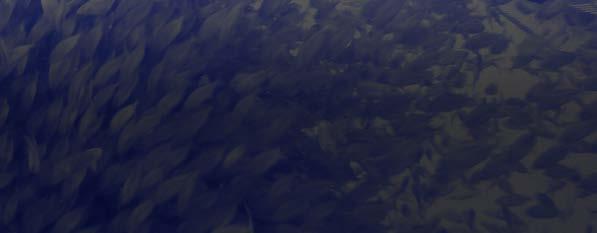
Feed Mill
TekPro
+44 1692 403403
www.tekpro.com
PROFILE: myaqua.info/QcZG
Dinnissen BV
+31 77 467 3555
www.dinnissen.nl
PROFILE: myaqua.info/loTI
To include your company in the International Aquafeed market place in print, and a company page on our website contact Tuti Tan +44 1242 267700 • tutit@perendale.co.uk To visit the online market place visit: www.aqfeed.info/e/1130----TECHNOLOGY 在后抗生素时代饲养 动物和鱼类 - 新冠肺炎时代的恢复力: - 气候变化:它将如何影响 鱼类养殖技术 FISH TECHNOLOGY-TECHNOLOGY PANDEMIC PROOF SOLUTIONS FOR A EVER CHANGING WORLD DON’T MAKE THE IMPOSSIBLE CHOICE, BE SEEN EVERYWHERE THAT MATTERS ALLOWING YOUR CUSTOMERS TO FIND YOU HOW THEY PREFER PRINT - DIGITAL - MOBILE - CONTENT - SOCIAL MEDIA - EXHIBITIONS - TRAINING - VIDEO ADVERTISING SOLUTIONS INTERNATIONAL AQUAFEED MEDIAKIT 2024 2024 FISH FARMING TECHNOLOGY supporter of Aquaculture without Frontiers Trusted publications for your industry
73 | April 2024 - International Aquafeed







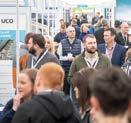




THE UK’S LARGEST TRADE SHOW FOR THE AQUACULTURE COMMUNITY 14 -15 MAY 2024 Aquaculture UK AV I EM O RE , SC OTL A N D REGISTER NOW Norway’s most exciting meeting place for the fisheries and aquaculture industry More information www.havexpo.no Contact us post@havexpo.no Welcome to HavExpo 2024 Place SOTRA ARENA BERGEN Date 6.-8. MAI 2024 Save the date! The exhibition area Straume Sports Park is located in Straume on Sotra and consists of 3 halls: Hall A – 7.900 kvm Hall B og C – Sotra Arena 9.900 kvm Hall D – 7.500 kvm 6.-8. mai 2024 74 | April 2024 - International Aquafeed
RAS system

Aqua Ultraviolet
+1 952 296 3480
www.aquauv.com
PROFILE: myaqua.info/KbEj
Aqua Ultraviolet has designed solutions that provide cutting edge technology and efficiency to their users. They offer innovative new products striving to make technology simple for all of their customers, distributors, dealers and consumers alike.
Life depends on water, and now more than ever, business does too. For over three decades Aqua Ultraviolet has been the premier manufacturer of ultraviolet sterilisers and bio-mechanical filtration. myaqua.info/KbEj
Silos

Vacuum
FAMSUN
+86 514 85828888
www.famsungroup.com
PROFILE: myaqua.info/Esjj
TSC Silos
+31 543 473979
www.tsc-silos.com
PROFILE: myaqua.info/YZlV
Dinnissen BV
+31 77 467 3555
www.dinnissen.nl
PROFILE: myaqua.info/loTI
Weighing equipment
PAYPER
+34 937 216 040
www.payper.com
PROFILE: myaqua.info/payper
Ottevanger
+31 79 593 22 21
www.ottevanger.com
PROFILE: myaqua.info/prYd
Yeast products
Leiber GmbH
+49 5461 93030
www.leibergmbh.de
PROFILE: myaqua.info/e/gTlw
Phileo (Lesaffre animal care)
+33 3 20 81 61 00
www.lesaffre.fr
PROFILE: myaqua.info/vqCK






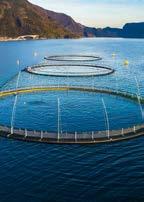
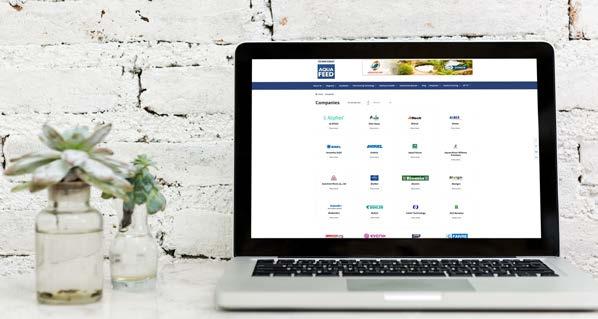

http://myaqua.info/qayv
more
- please
or
kit
For
information about our market place
view
download our 2024 media
-TECHNOLOGYFARMING TECHNOLOGYFISH TECHNOLOGY 在后抗生素时代饲养 在适应性安全网中着陆 气候变化:它将如何影响 鱼类养殖技术 Escocia pequeña FISHFARMINGTECHNOLOGY--FISH TECHNOLOGY PANDEMIC PROOF SOLUTIONS FOR A EVER CHANGING WORLD DON’T MAKE THE IMPOSSIBLE CHOICE, BE SEEN EVERYWHERE THAT MATTERS ALLOWING YOUR CUSTOMERS TO FIND YOU HOW THEY PREFER PRINT - DIGITAL - MOBILE - CONTENT - SOCIAL MEDIA - EXHIBITIONS - TRAINING - VIDEO ADVERTISING SOLUTIONS INTERNATIONAL AQUAFEED MEDIAKIT 2024 2024 FISH FARMING TECHNOLOGY Proud supporter of Aquaculture without Frontiers UK CIO Trusted publications for your industry To include your company in the International Aquafeed market place in print, and a company page on our website contact Costa Skotidas +44 1242 267700 • costas@perendale.co.uk To visit the online market place visit: www.aquafeed.co.uk/the-market-place
75 | April 2024 - International Aquafeed
the interview
Ronald Faber CEO, Alltech Coppens, Netherlands
As Alltech’s global aqua lead and CEO of Alltech Coppens, Ronald Faber oversees all of Alltech’s aqua business.
Faber leads a global team of aquaculture experts focused on fish nutrition, feed production, technical support and sustainable aquafeed solutions. This team works closely together to improve aquatic feed nutrition and sustainability in aquaculture.
Faber received a master’s degree, specializing in aquaculture and fisheries, from Wageningen University, the Netherlands. He began his career in the aquaculture and veterinary industries and joined Coppens International in 1998. With more than 30 years of experience in the aquaculture industry, Faber’s journey has been marked by a commitment to innovation and sustainable practices.
You have a rich career in the industry, what initially led you to this field?
Initially I wanted to become a veterinarian, but during my studies the aqua industry really intrigued me. The industry was completely unknown at that time and there was so much to learn and discover, which is where I found my place.
Aquaculture is truly a people’s industry. It’s still a relatively small industry, you see a lot of old friends at the trade shows.
With your extensive background in aquaculture spanning over 30 years, could you share some key insights into how the industry has evolved in terms of both technological advancements and sustainable practices?
From a technology standpoint, what we have seen over the last couple of years is an increase of knowledge in the industry. It’s not only the pipes and steel, but also the data driven industry which I think we have just started to embark upon.
From a sustainability standpoint, the industry has been growing fast, especially in the last couple of years. We are not talking about replacing fishmeal and fish oil anymore, we are already past that stage and onto the next level.
Just touching on the technological advancements, how important is the recent influx of capital into the industry?
Of course, the capital is very necessary for starting something new. There is not regular funding, and there is still some unproven technology, so we need capital from people who really want to support this industry.
With the acquisition of Coppens International by Alltech in 2016, how has this merger influenced the direction and goals of Alltech Coppens, particularly in terms of research and development?
The goal was to build a powerhouse within the aquafeed industry, of course building on the knowledge that Alltech brought in additives. Alltech is a leading company when it comes to additives, which has brought us to the next step.
Given your experience working across different regions, are there any specific regions or countries that you believe hold significant potential for growth, and what factors contribute to their promise as emerging aquaculture hubs?
Most continents have their own industry. They differ, of course, but there are two regions where I think there is growth potential for the coming years.
First, there’s North America. North America is heavily dependent on imported fish, and the industry is still relatively small. There is still room for growth, especially on the feed side. They are really lacking the technology that we have here mainly in Europe. The aquafeed industry in Mexico is quite significant already, and that’s what’s missing in the US and Canada.
But what I also like to address is Africa. West Africa, Alltech Coppens has been a pioneer in this region. We are also building on a significant investment in West Africa because we have a strong belief that’s the future market for feed and fish farmers.
Alltech Coppens emphasizes the importance of improving aquatic feed nutrition. Could you discuss some of the key strategies or advancements your team has implemented to enhance the nutritional quality of aquafeed?
Yes, I’d like to name three of them. First is our winter feeding. What we see in the winter conditions is that fish have difficulties with digestibility, so we did a lot of research into this and developed a specified tailor-made feed for winter feeding.
The second one is net energy. We are the first in the industry to launch net energy for fish, so we cover the full cycle of production in the fish. Normally people formulate on digestible energy, but you miss a significant part this way. We have the flexibility and are leading in this area.
The third one is, of course, sustainability. It’s very important to us, we have invested in a PhD funding together with Sterling on a full LCA method for the value chain. We’ve seen in the past that this industry is built on innovation and research, which is true, but I think it’s also built on people. The people in the industry are passionate. They want to achieve something, build an industry because they love it. Of course, you need technology, you need your capital influx, but ultimately, I think the industry is built on people.
Couldn’t agree more. And finally, congratulations. You have been awarded silver and gold medal from EcoVadis, of all your contributions, what do you consider as most worthy of this award?
Thank you, we are extremely proud of it. What I learned from the whole process of achieving this EcoVadis silver medal and the gold medal, is that it’s not about us. It’s not about the farmers. It’s not about the supplier, but it’s the value chain. And that’s what EcoVadis does - it covers the full value chain. We have to do it together and that is the key point that the awards represent I believe.
76 | April 2024 - International Aquafeed

International Aquafeed - April 2024 | 77
PeopleTHE INDUSTRY FACES



Anpario appoints new Aquaculture Technical Sales Manager
Anpario, the independent manufacturer of natural sustainable feed additives for health, nutrition and biosecurity for livestock and aquaculture production, has announced the appointment of Gerred Fuchs BSc MRes as Technical Sales Manager for Aquaculture.
Gerred has recently completed a Masters in Aquaculture Feed Additives at the University of Portsmouth, following a BSc in Aquaculture and Fishery Management from Sparholt College. His previous industrial experience include Aquatic Sales, Aquatic Technician for salmonid trials, and researching novel feed ingredients and additives to improve the health, diet utilisation, growth performance and production sustainability of various aquaculture species.
“I joined Anpario as they are a company filled with like-minded individuals who are, resolutely, devoted to fostering collaborative objectives and pertinacious about developing innovative solutions to tackle challenges in the aquaculture sector.” said Gerred Fuchs.
Bluecirc appoints new Marketing Director
Bjorn Ronge has been appointed Business Development Director of Bluecirc, a technology supplier that came as a spin-off company of MoreFish, Norway. The company specialises in providing technology for RAS systems while for the design and construction the expertice of MoreFish will be used.
Bjorn has been in aquaculture for over a decade, coming into the industry with a background in engineering with biotechnology and business and marketing, he began working with seaweed production before moving onto fish feed where he has specialised for the past eight years.
This background in engineering is what helped him succeed at PTAqua, where he worked until 2023 before recently starting at Bluecirc, as he could use his technical knowledge to help push his projects forward.
“My new role is more about investigating the market, finding potential clients, and products from Europe and rest of the world and trying to transfer those to the Norwegian market and vice versa. As I have a background in Engineering, I find this opportunity to work with Bluecirc and technology products really exciting”, says Bjorn. Technical knowledge is not the only thing Bjorn brings to the table however, his many years as a Marketing executive experience brings a large network with him and his relationships with various suppliers and farmers will help to break the new company into the market and expand their business and successfully and quickly as possible.
Ian Robert leaves Mowi after 31 years
Ian Roberts, communications director for Mowi Scotland, Ireland and Canada, is leaving after 31 years with the company. Ian Roberts has been with Mowi since 1993, with positions held in salmon production and communications spanning his 31-year career.
“I’ve thoroughly enjoyed the various career opportunities that the company has entrusted to me,” said Ian. “From leading the salmon aquaculture partnership with the Kitasoo Xai’xais First Nation in British Columbia during the first half of my career, to directing communications in Canada and Scotland over the past 15 years and having the opportunity to work with fabulously smart and caring people, it has all been very rewarding for me personally.”
Ben Hadfield, Mowi’s COO Farming (Scotland, Ireland, the Faroes & Canada East), said: “Ian’s leadership and confident presence in communications has been a strong asset for Mowi and for the wider salmon farming sector. His confident, passionate approach alongside strong respect from communities where salmon is produced has led to trust and a greater understanding of our business. I wish Ian all the best in his future endeavours and hope that he will remain closely involved in the aquaculture sector in some capacity.”
NEW App OINTMENT? - TEll THE INDUSTRY! A growing team? New appoiunments? Industry Awards for individual in your organisation? - Send news about your team to joyn@perendale.co.uk
78 | April 2024 - International Aquafeed


High quality fish farming equipment
Designer & Manufacturer since 1958
FISH PUMP + FISH GRADER + FISH COUNTER
Hatchery pack
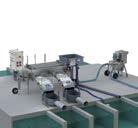
- Salmonids up to 1,5 kg
- Sea bass & bream up to 800 g
- Up to 2 - 4 tons / hour
Harvesting pack
Serie 10 (2,5’’)
Serie 40 (8’’)

Serie 50 (10’’)
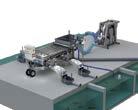
- Salmonids up to 40 g
- Sea bass & bream up to 25 g
- Up to 1 ton / hour
Grow out pack
Serie 30 (6’’)

- Salmonids up to 3,5 kg
- Sea bass & bream up to 1,5 kg
- Up to 3 - 4 tons / hour
FAIVRE offers a complete range of grading packs for fish farms with sizes in between 1 g and 3.5 kg. From Hatchery to Harvesting, Faivre products answer all your needs.
THE BENEFITS OF A COMPLETE FAIVRE GRADING PACK
Guarantees compatibility between all your equipment, Counters and fish pump adapted to the size and speed of the grader, Connecting elements included, Power is centralised on a single control box.
All packs are given as an example and can be modified according to your needs
FAIVRE Group
7 Rue de l’Industrie
25110 Baume Les Dames
France
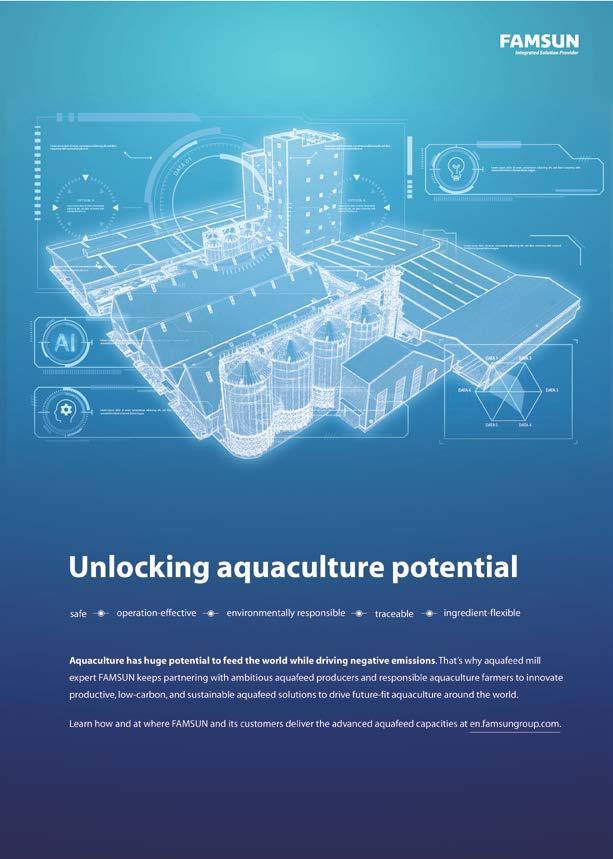


















 Professor Simon Davies Nutrition Editor, International Aquafeed
Professor Simon Davies Nutrition Editor, International Aquafeed























 Figure 1: YCW fractions are characterised by differences in cells surface structures and composition. (A) Scanning electron microscopy images of 4 different YCWs, (B) YCW biochemical composition (% MOS and β-glucans), (C) Binding capacity of MOS or β-1,3-glucan of each of the YCW tested. (Adapted from Rawlings et al., 2023).
Figure 1: YCW fractions are characterised by differences in cells surface structures and composition. (A) Scanning electron microscopy images of 4 different YCWs, (B) YCW biochemical composition (% MOS and β-glucans), (C) Binding capacity of MOS or β-1,3-glucan of each of the YCW tested. (Adapted from Rawlings et al., 2023).















 Figure 3: (A) Transversal view of the skin wound showing delimitation of the newly synthesized granulation tissue and, (B) Surface area of the newly synthesized tissue at the wound base.
Figure 3: (A) Transversal view of the skin wound showing delimitation of the newly synthesized granulation tissue and, (B) Surface area of the newly synthesized tissue at the wound base.






 by Dean Smorenburg, CEO, Maltento, South Africa
by Dean Smorenburg, CEO, Maltento, South Africa



































































































































































 Sabine Wedell and Kai Watjen, organisers of Fish International with Costa Skotidas
Petra Weigl and Remco De Waard of Regal Spring Europe with Costa Skotidas.
Chloe Krannidiotis and Eleftheria Bikon of Aqua manager. Aqua Manager offers and develops advanced aquaculture software solutions.
Sabine Wedell and Kai Watjen, organisers of Fish International with Costa Skotidas
Petra Weigl and Remco De Waard of Regal Spring Europe with Costa Skotidas.
Chloe Krannidiotis and Eleftheria Bikon of Aqua manager. Aqua Manager offers and develops advanced aquaculture software solutions.






























